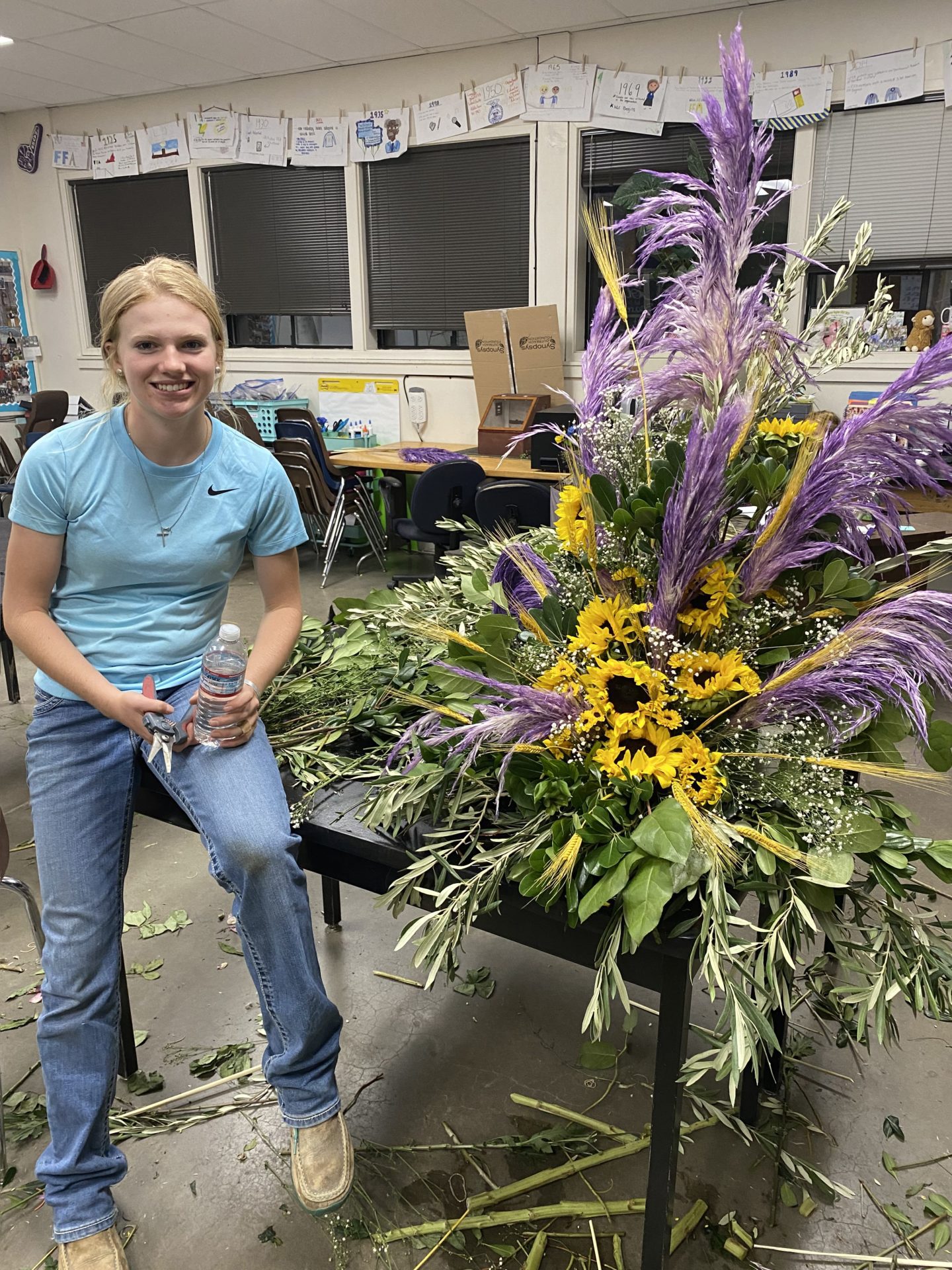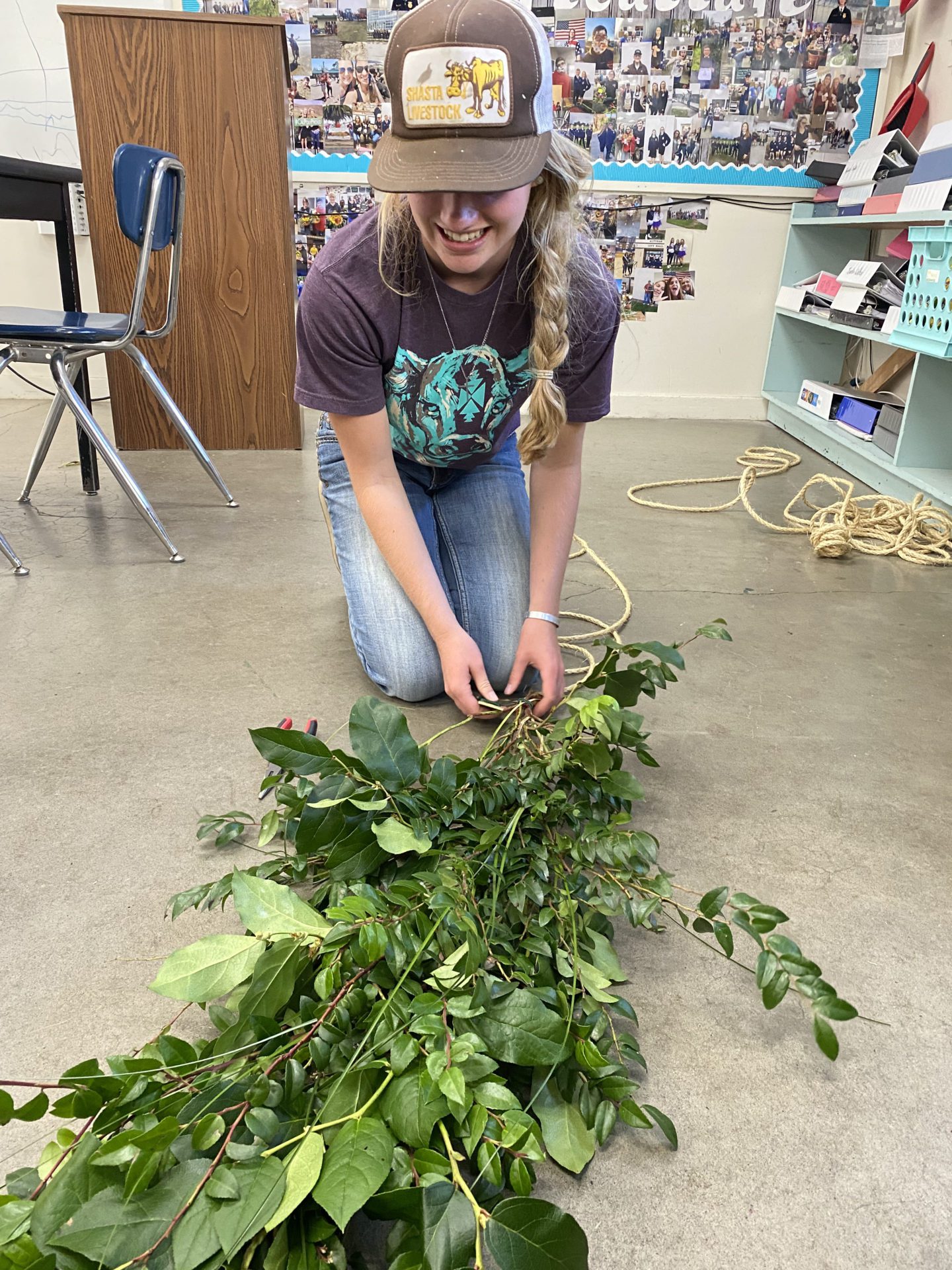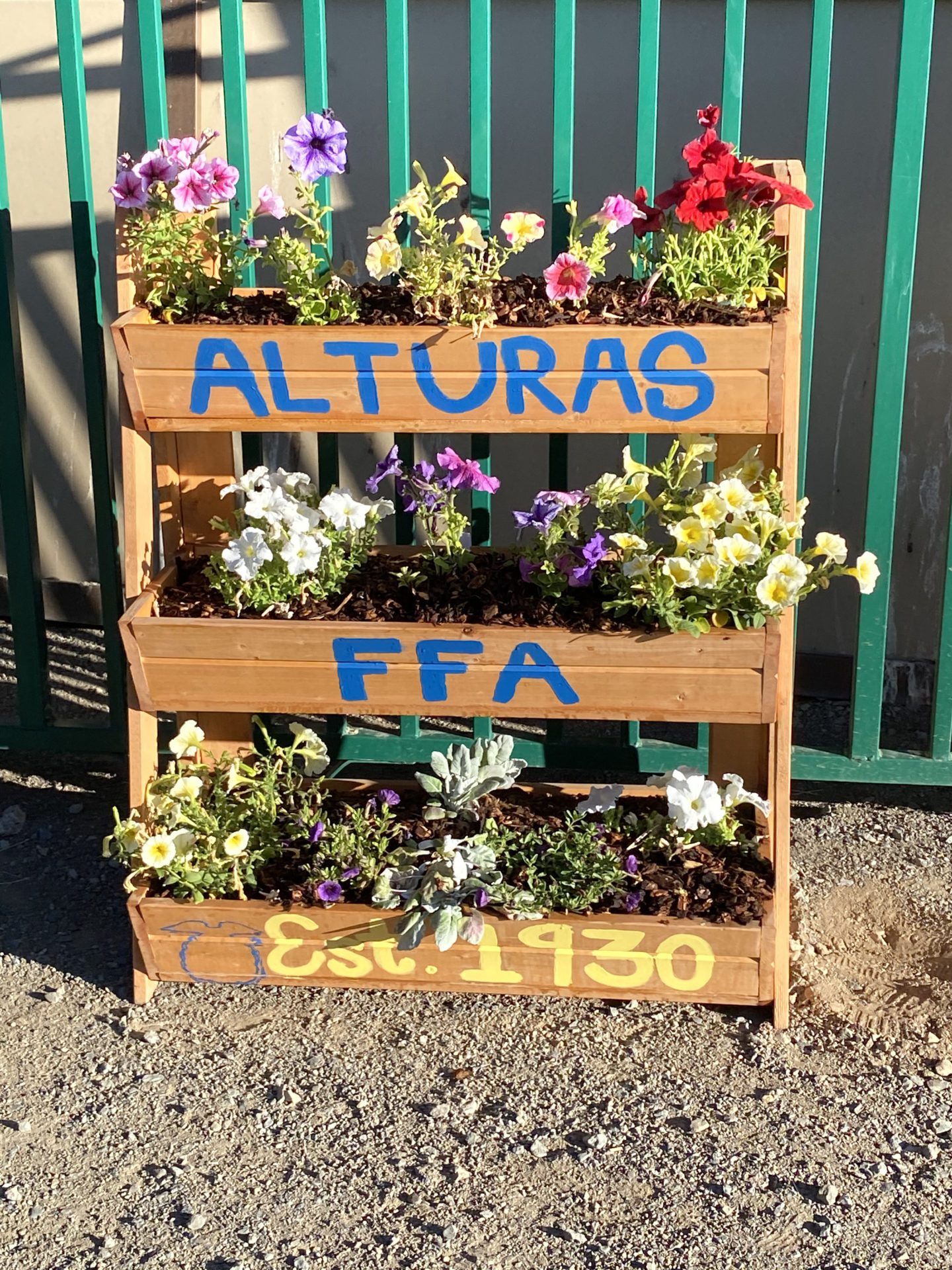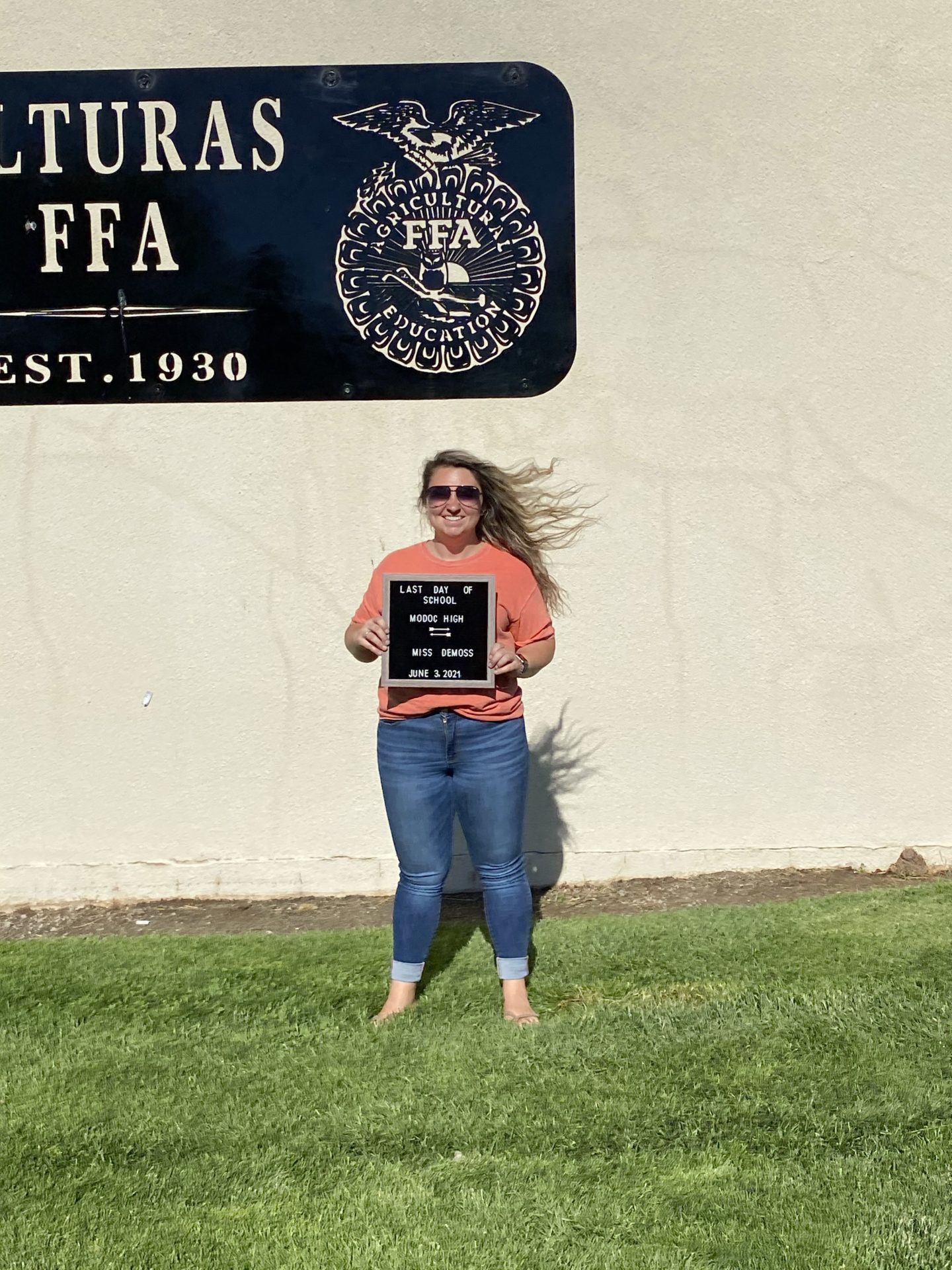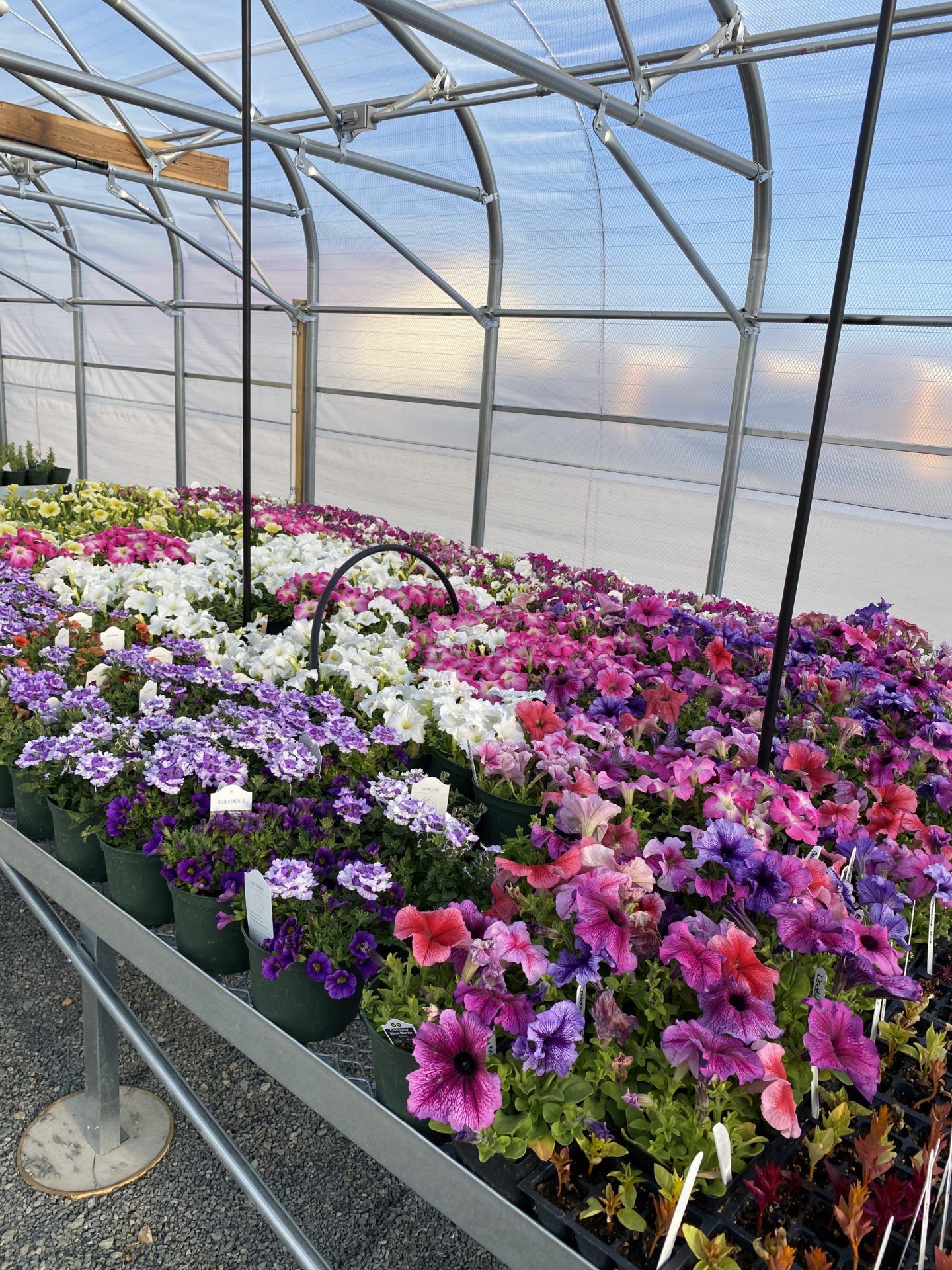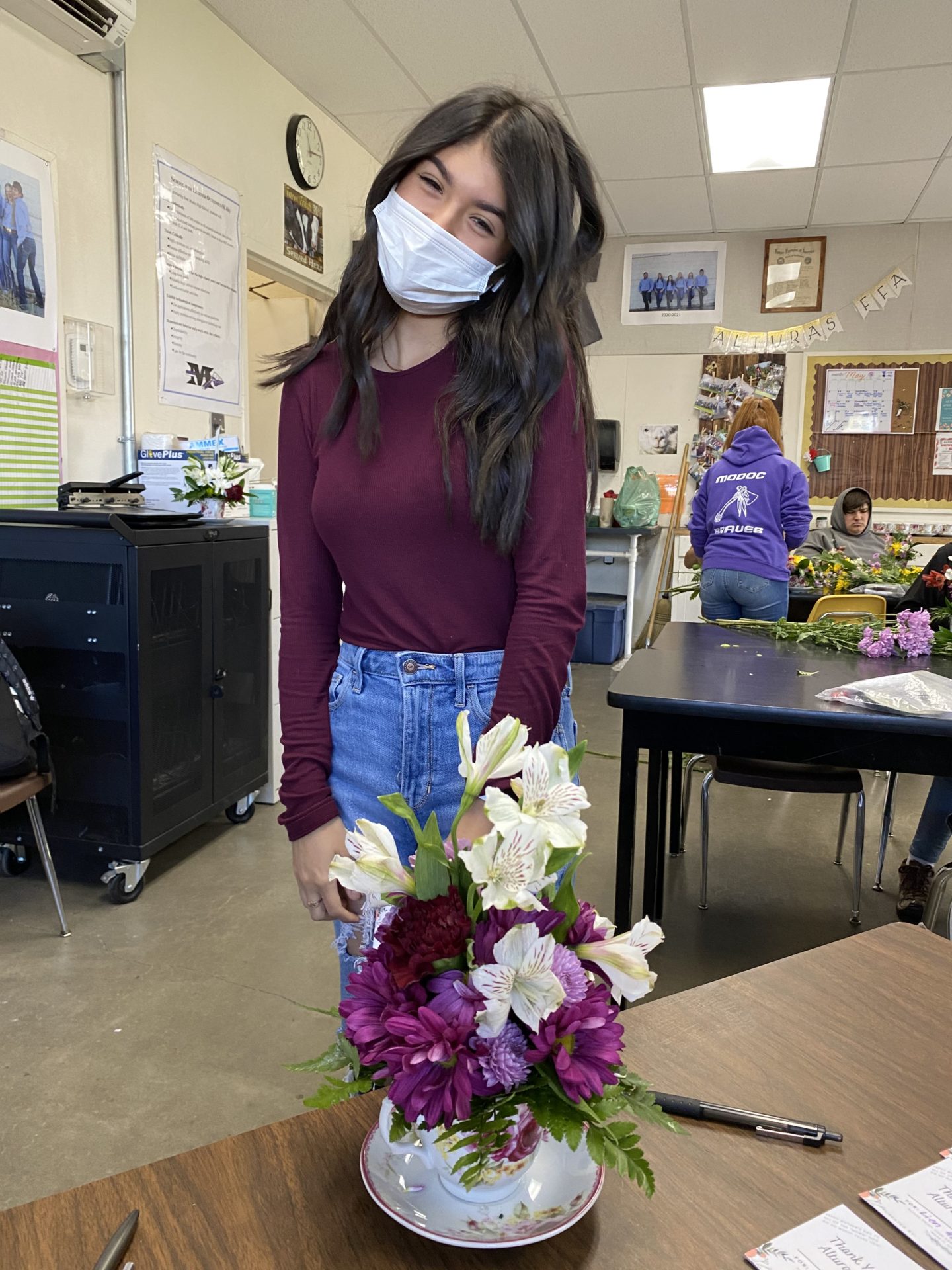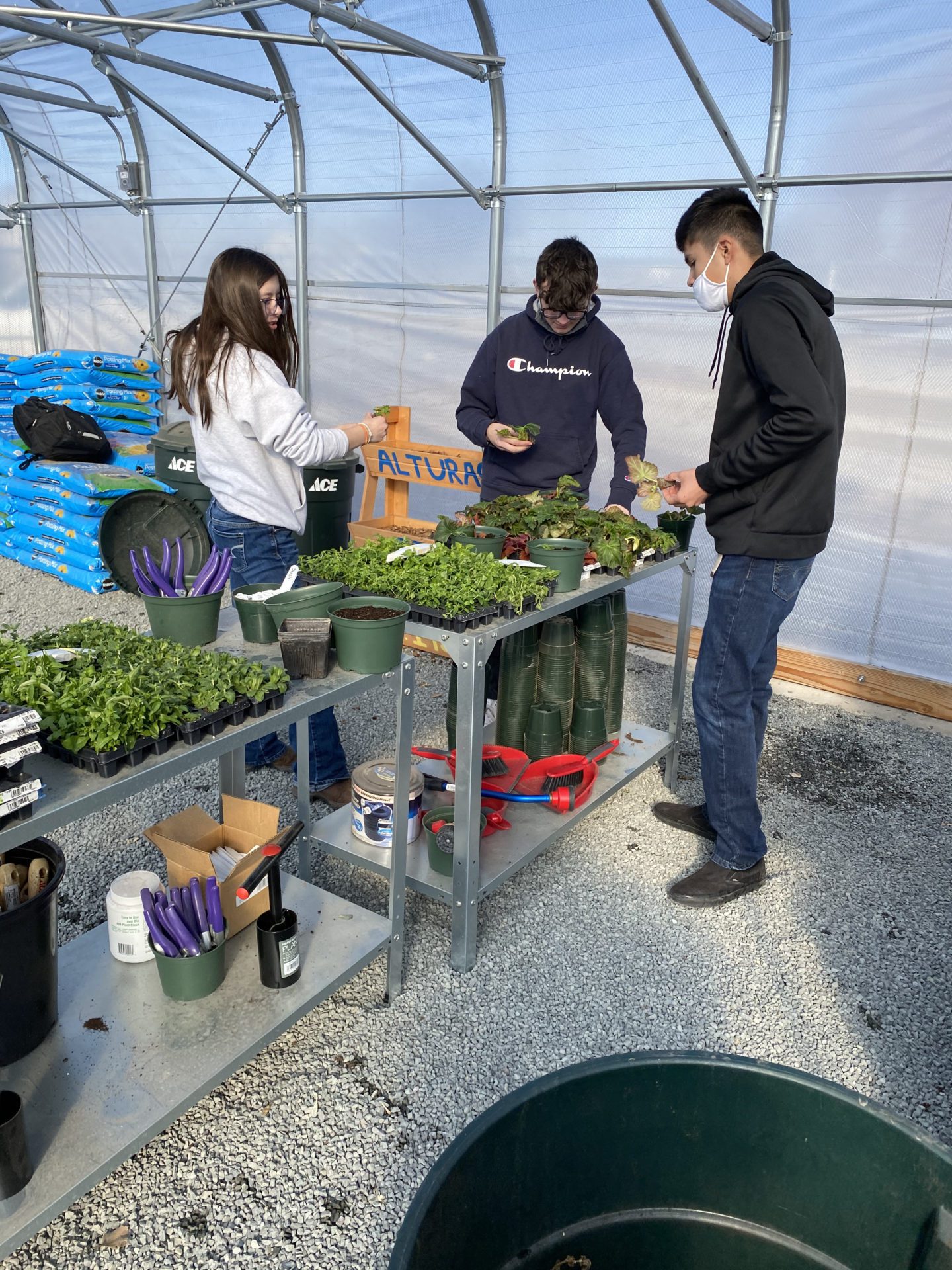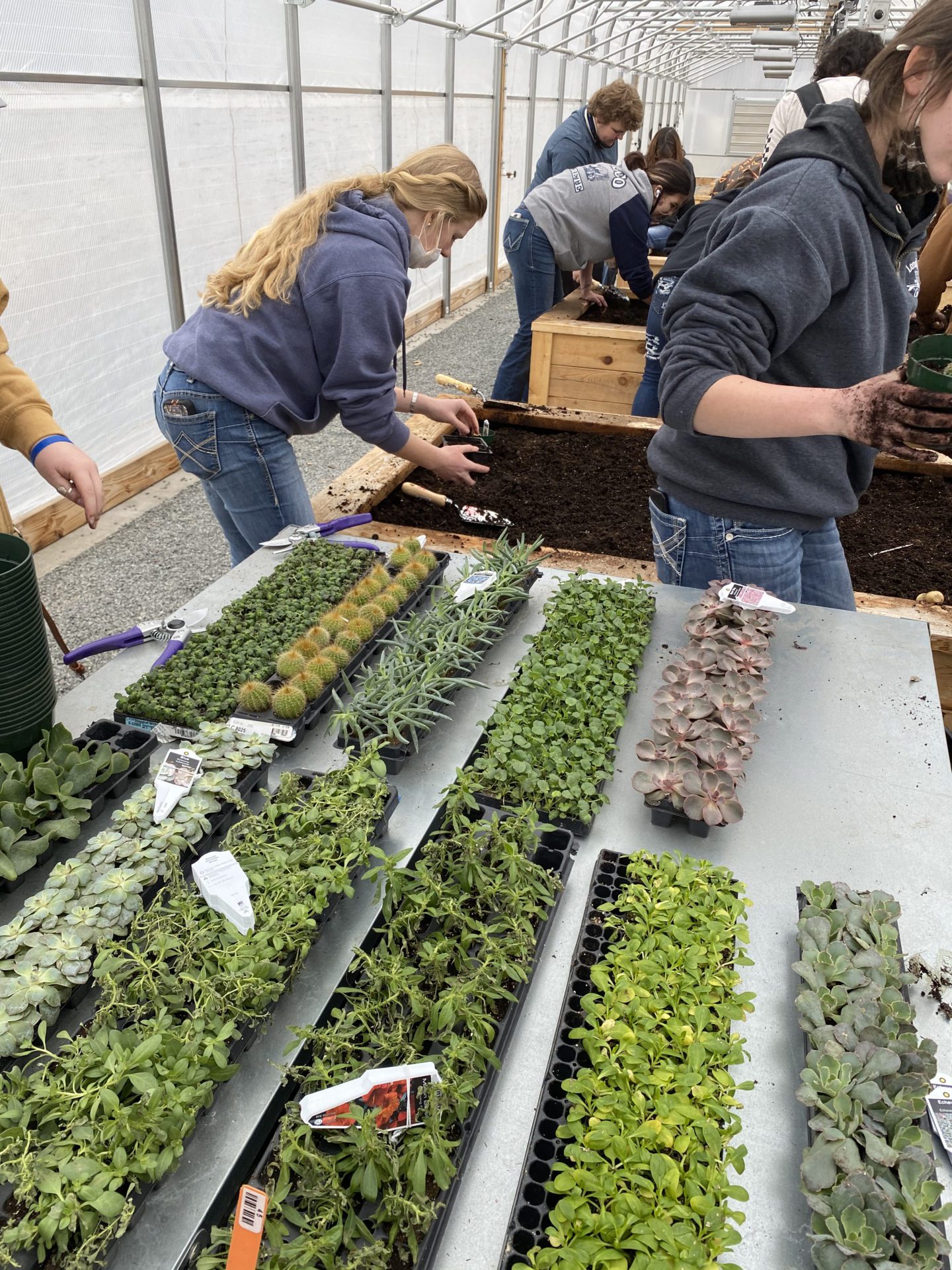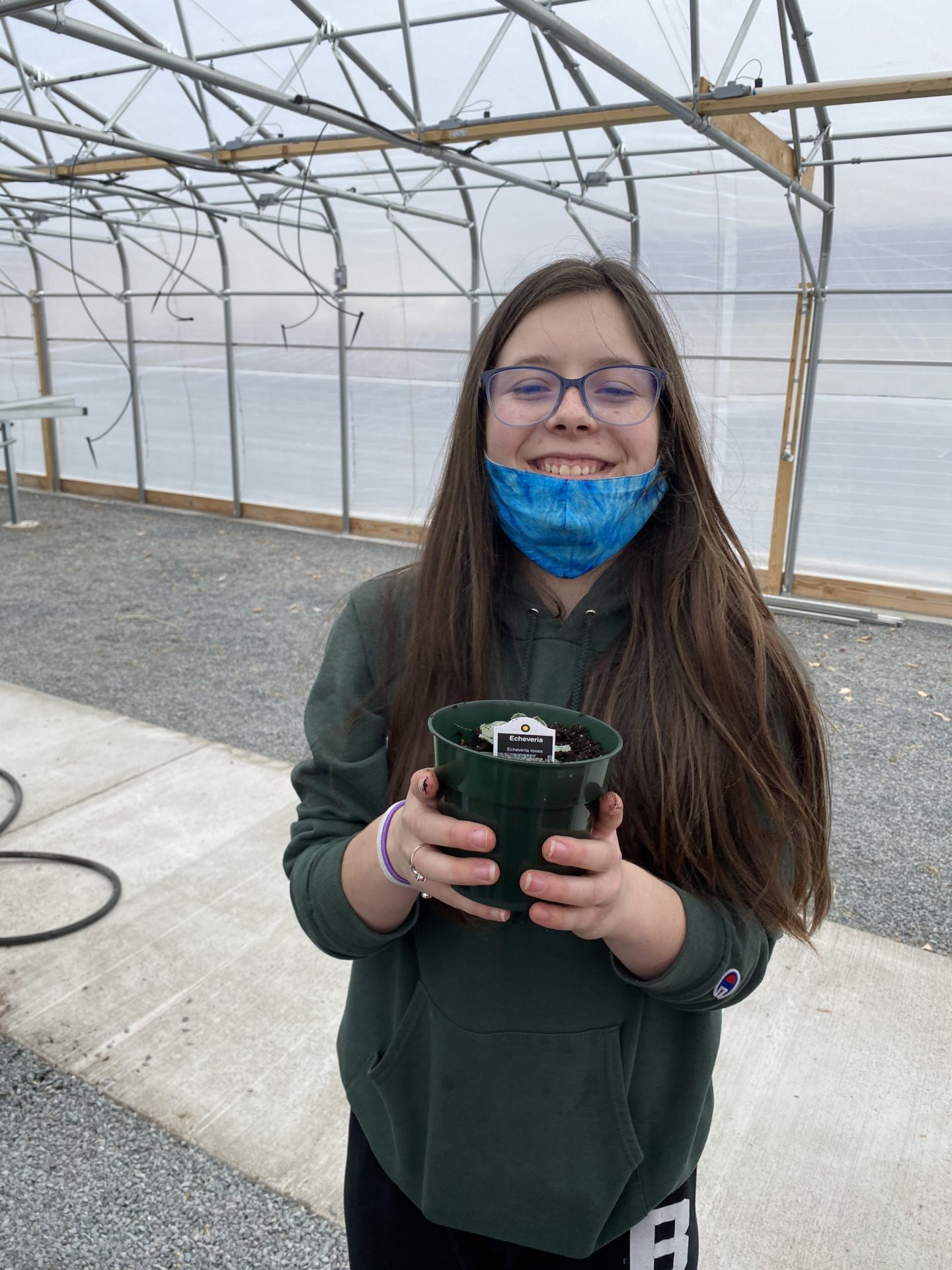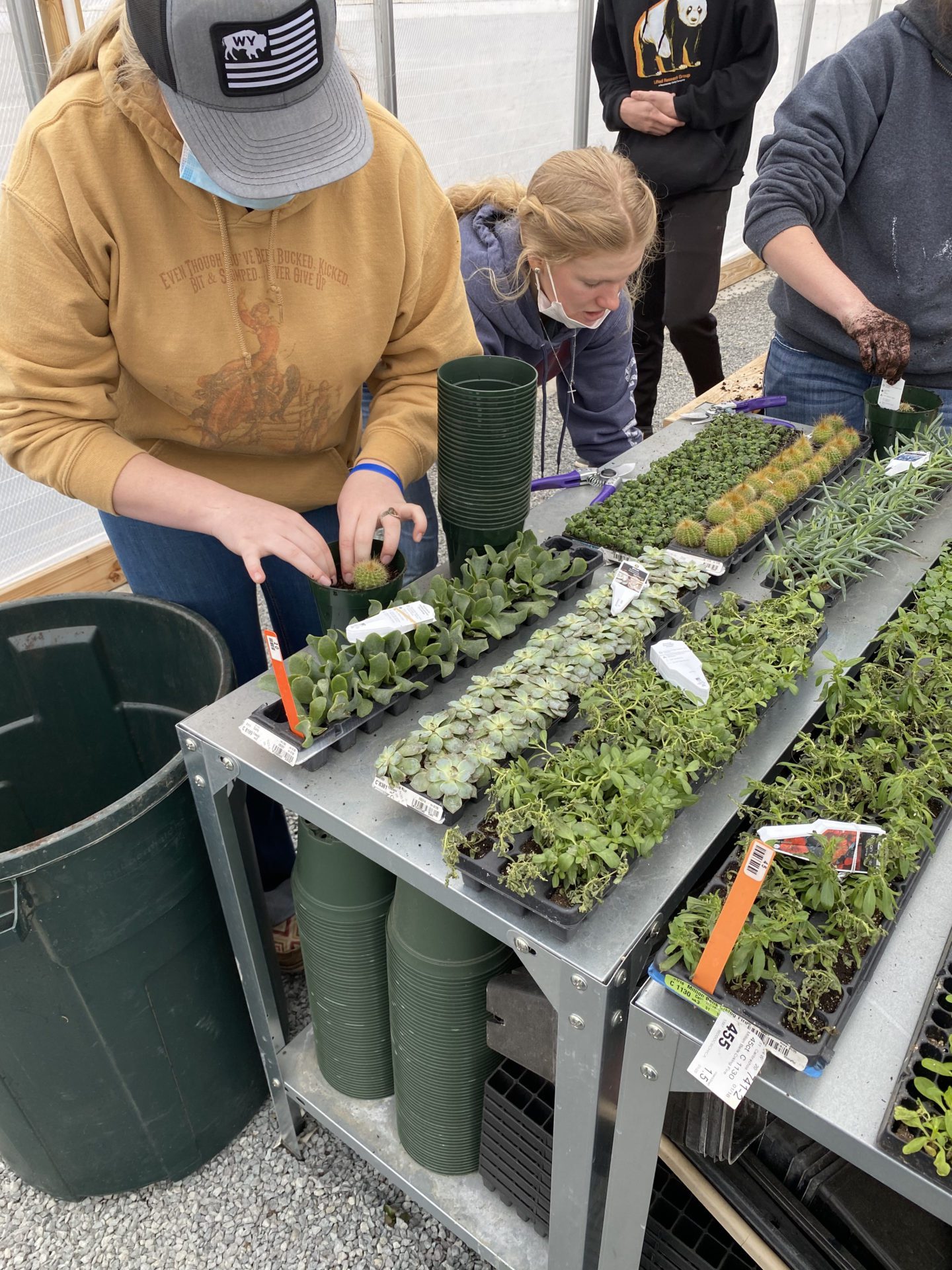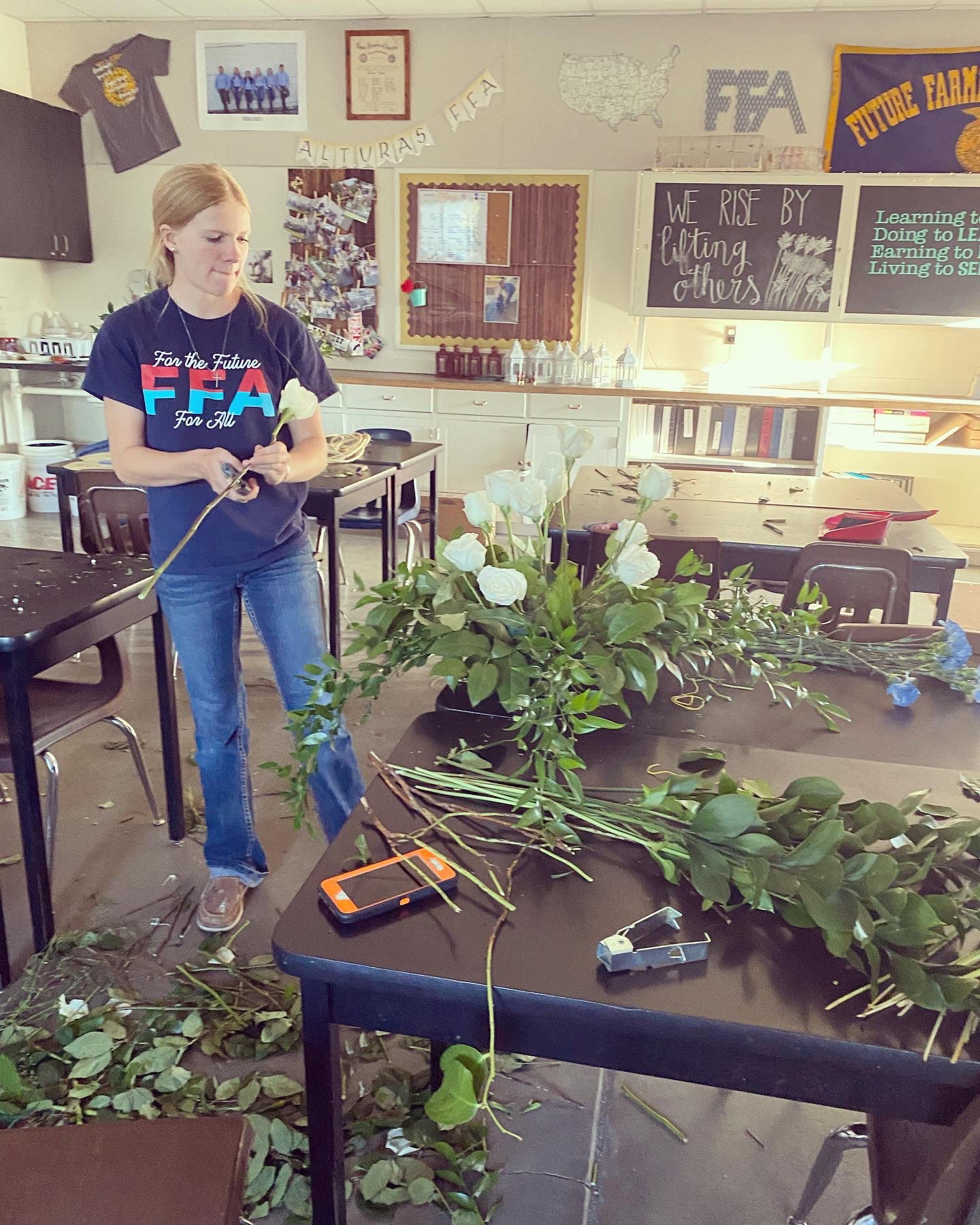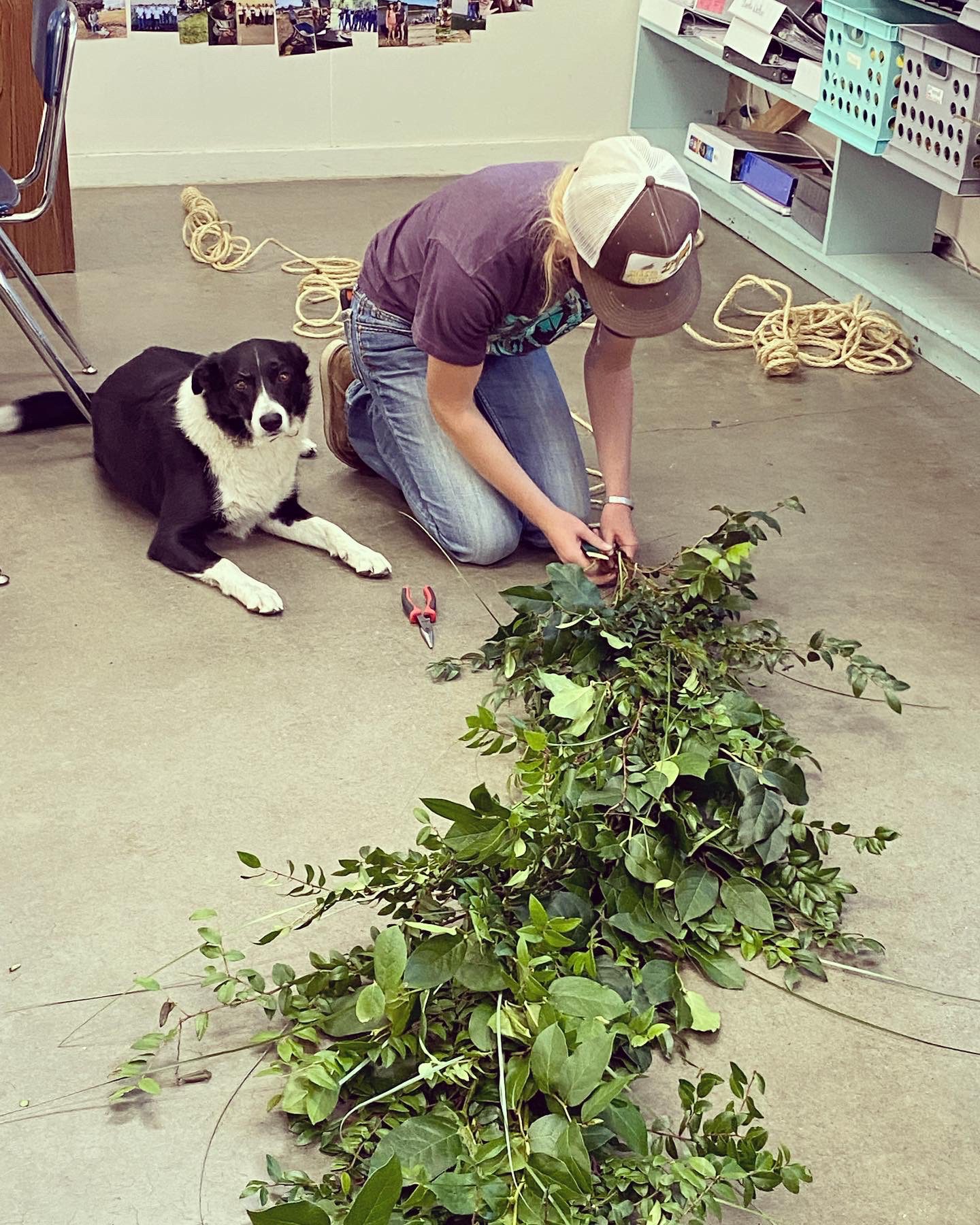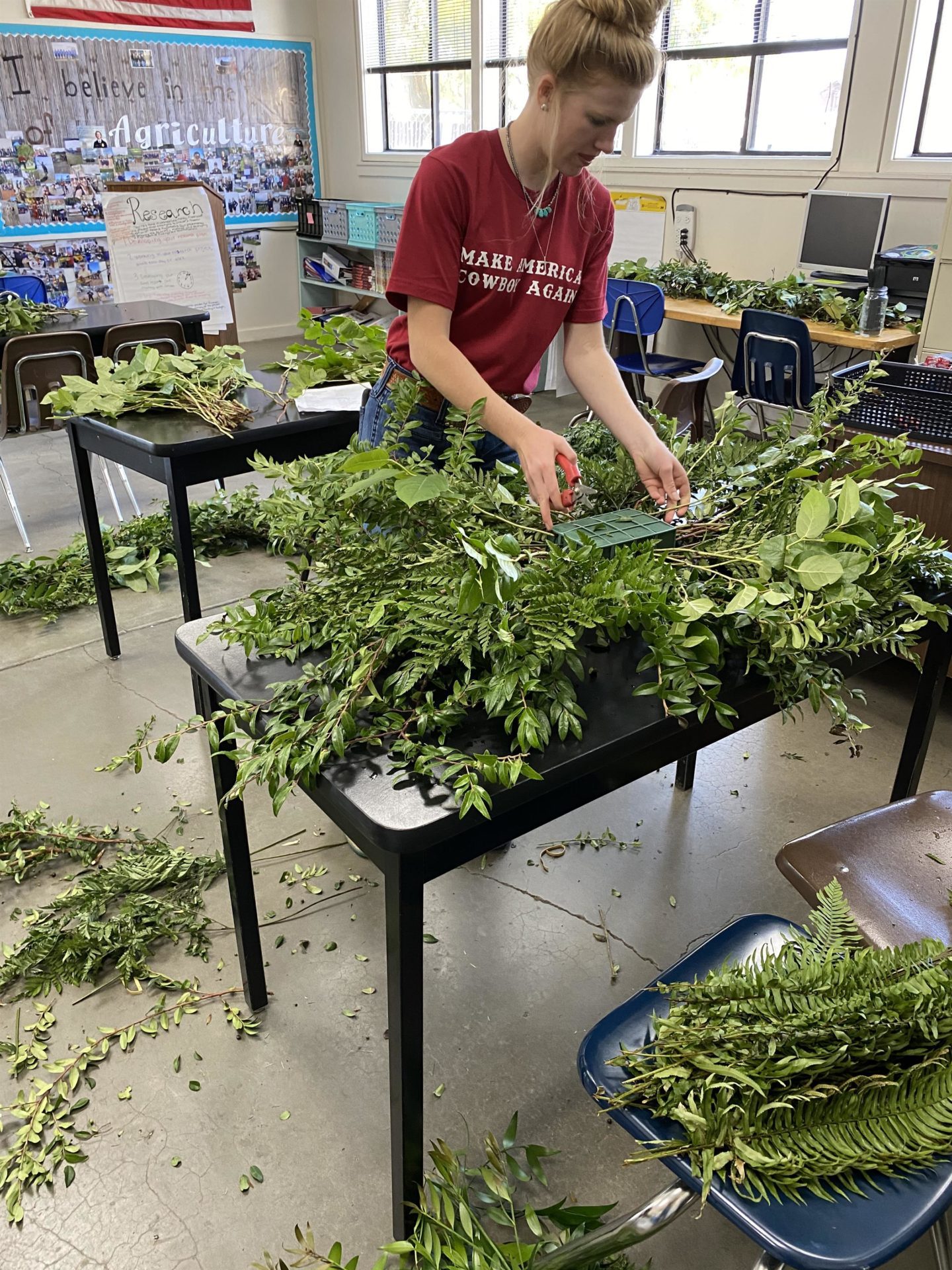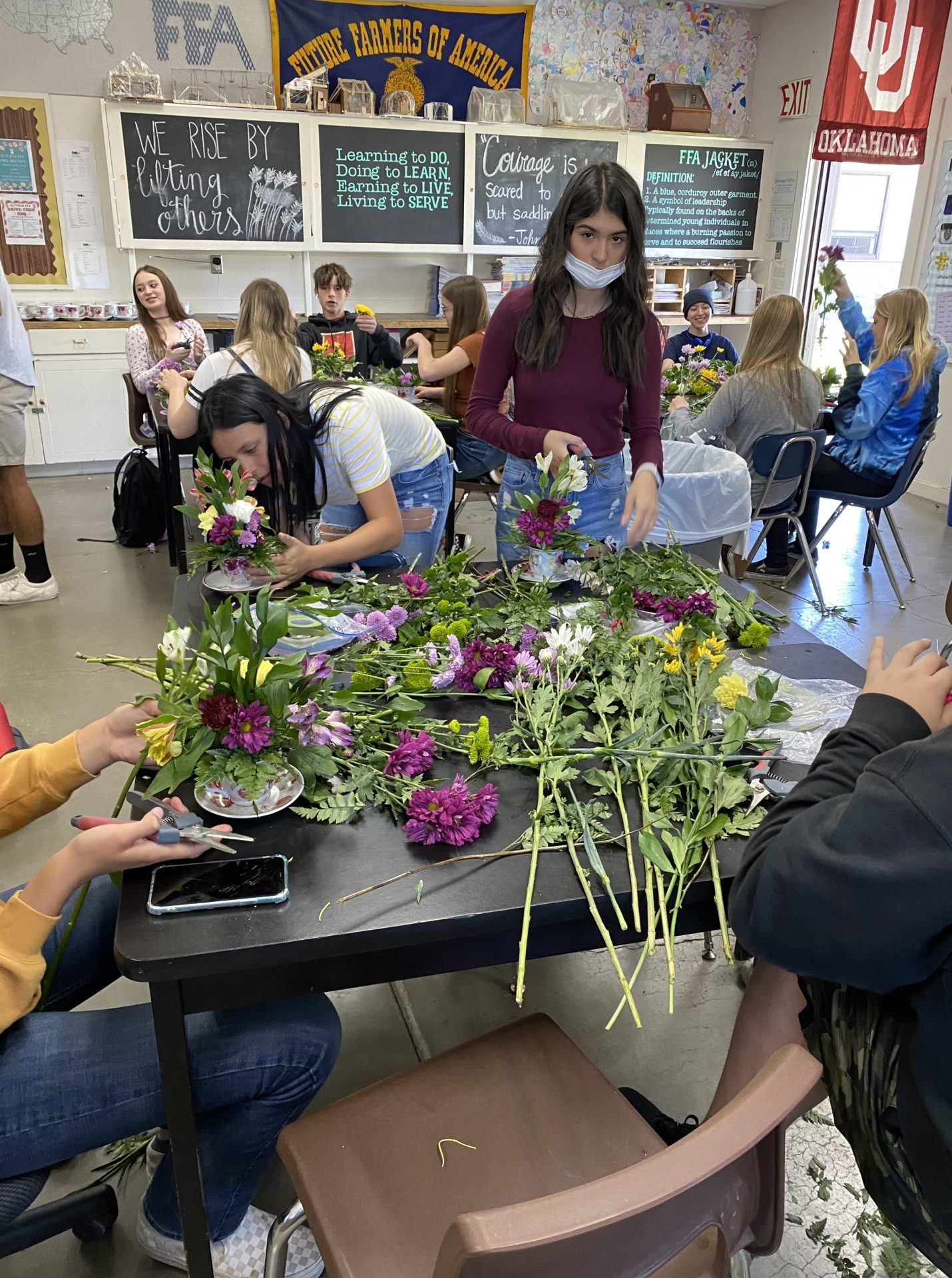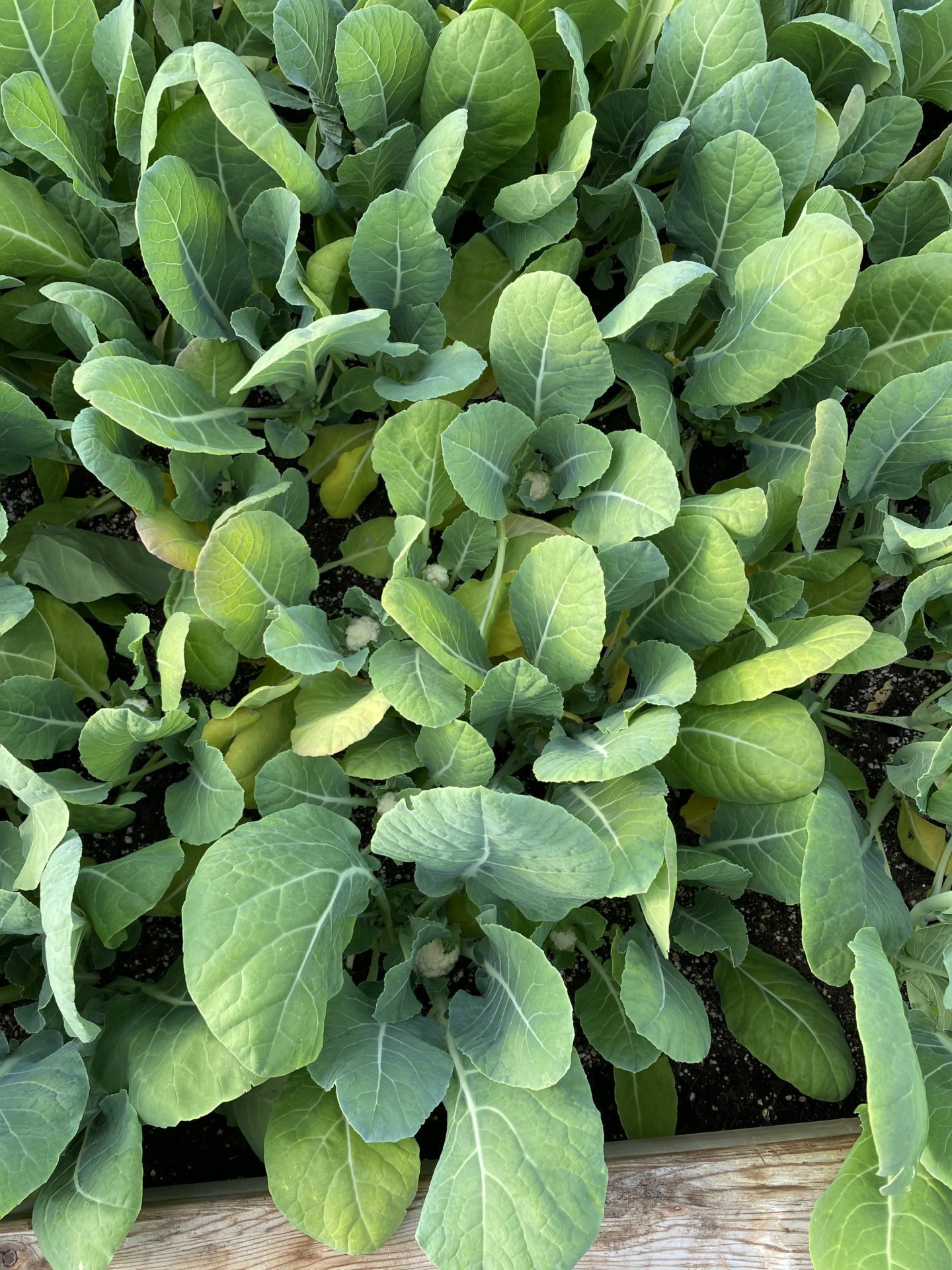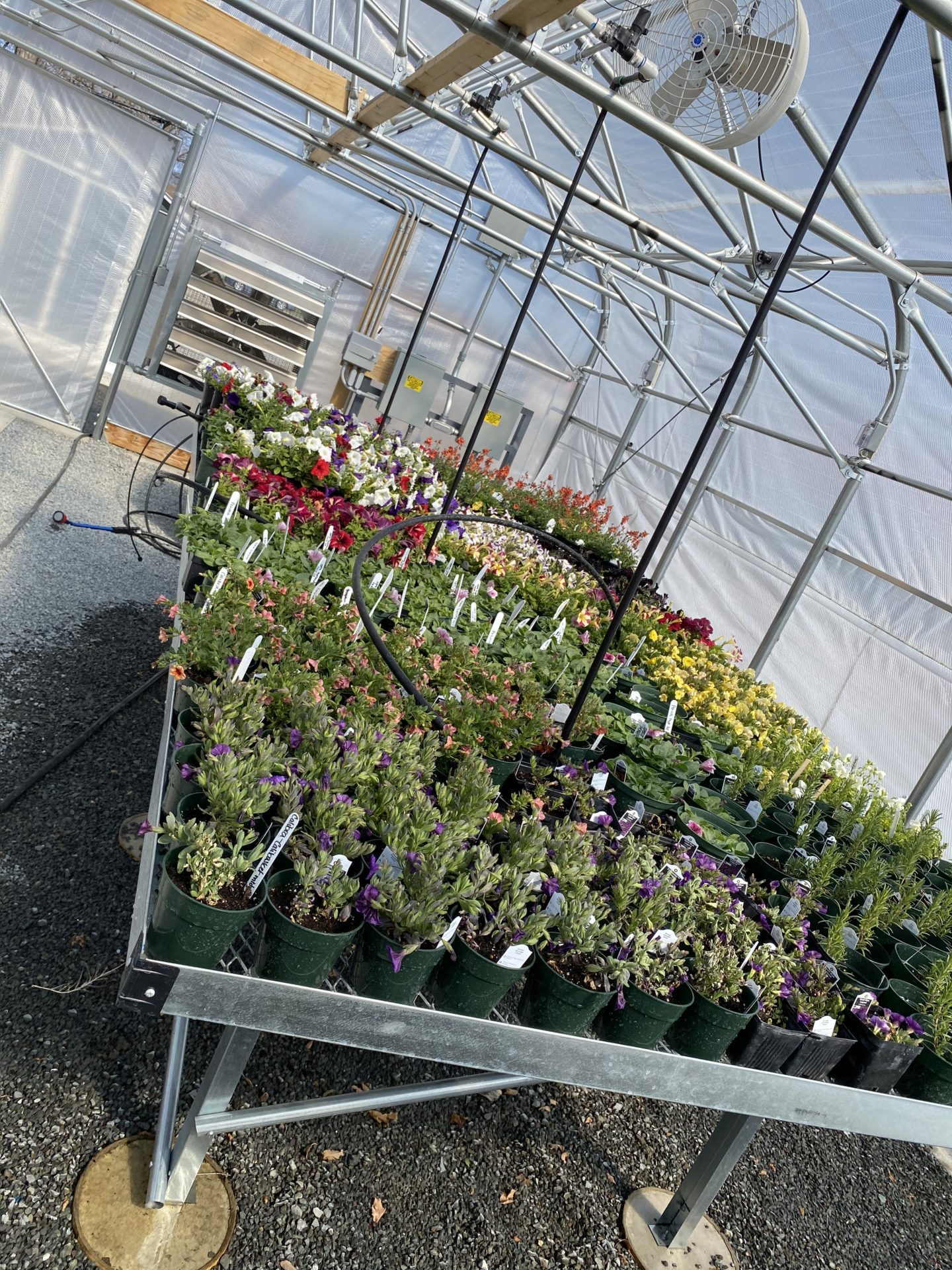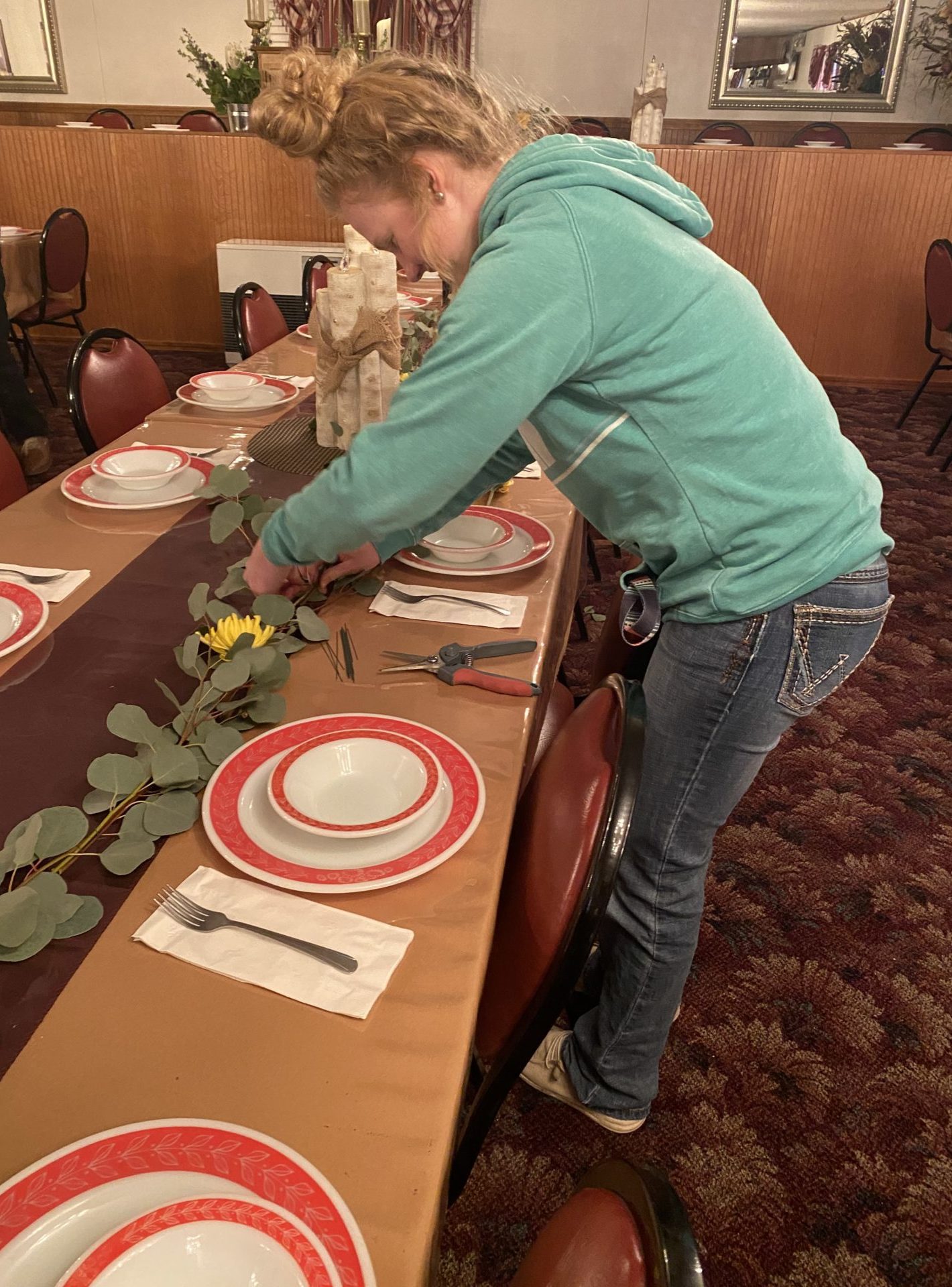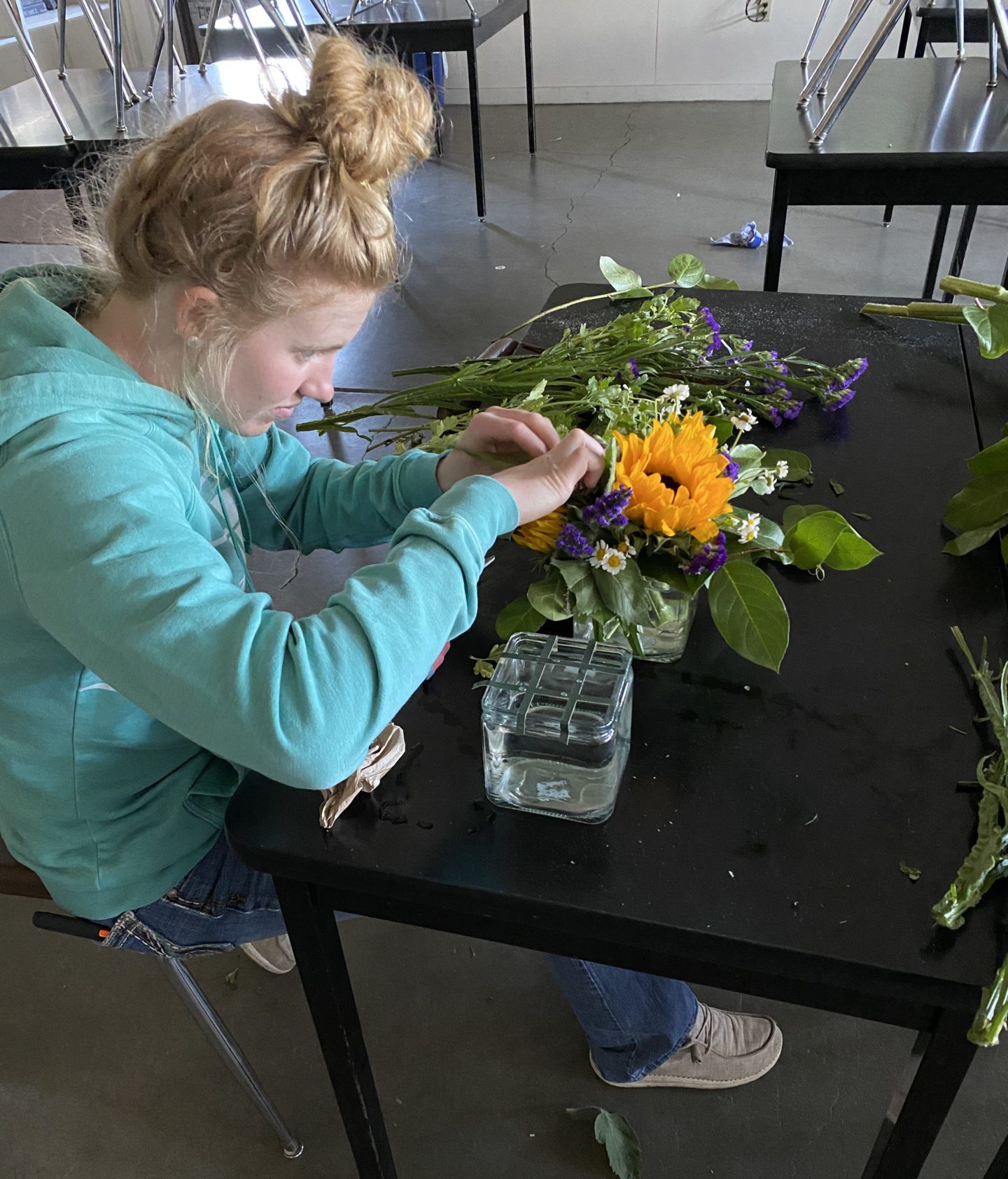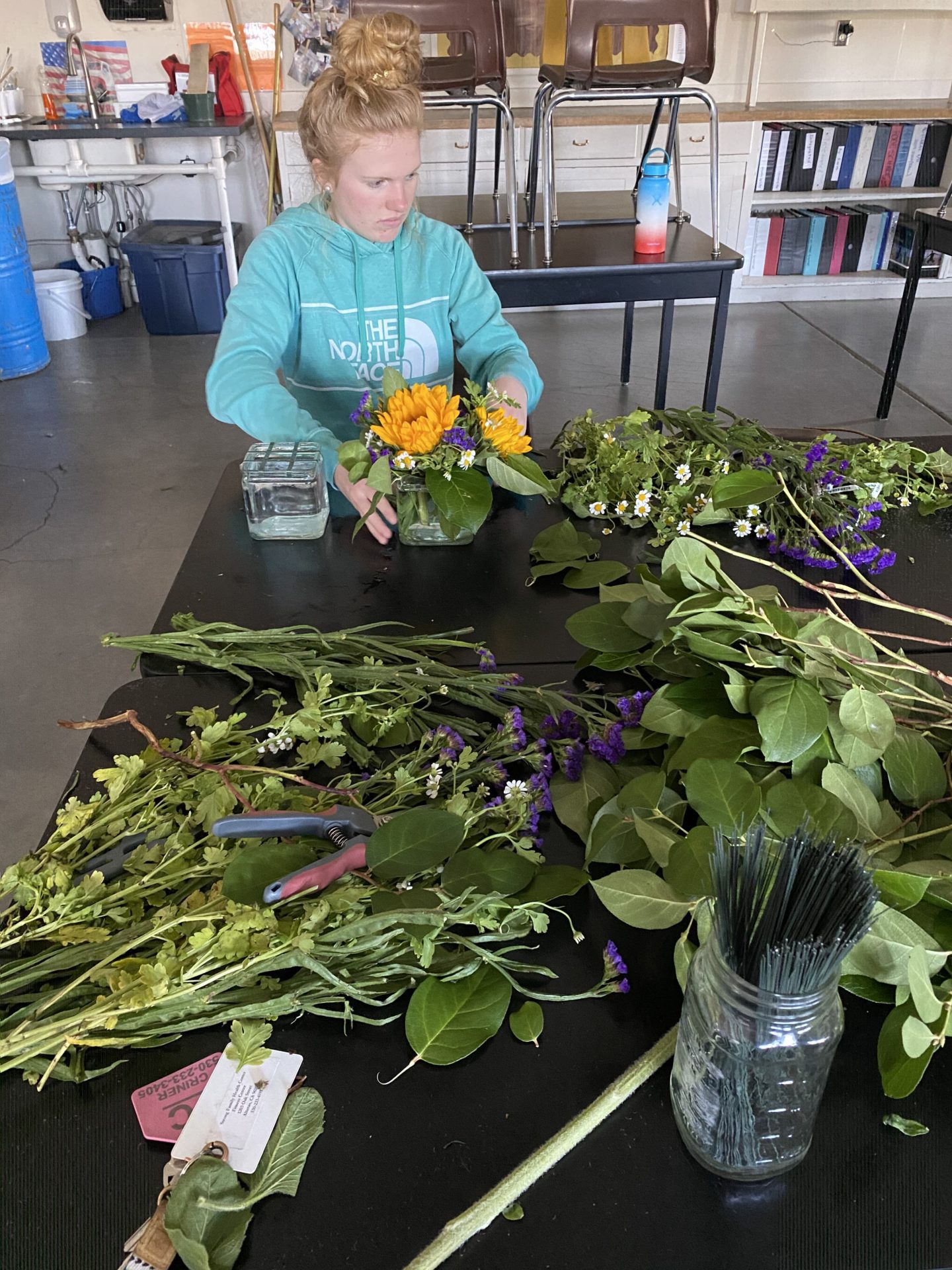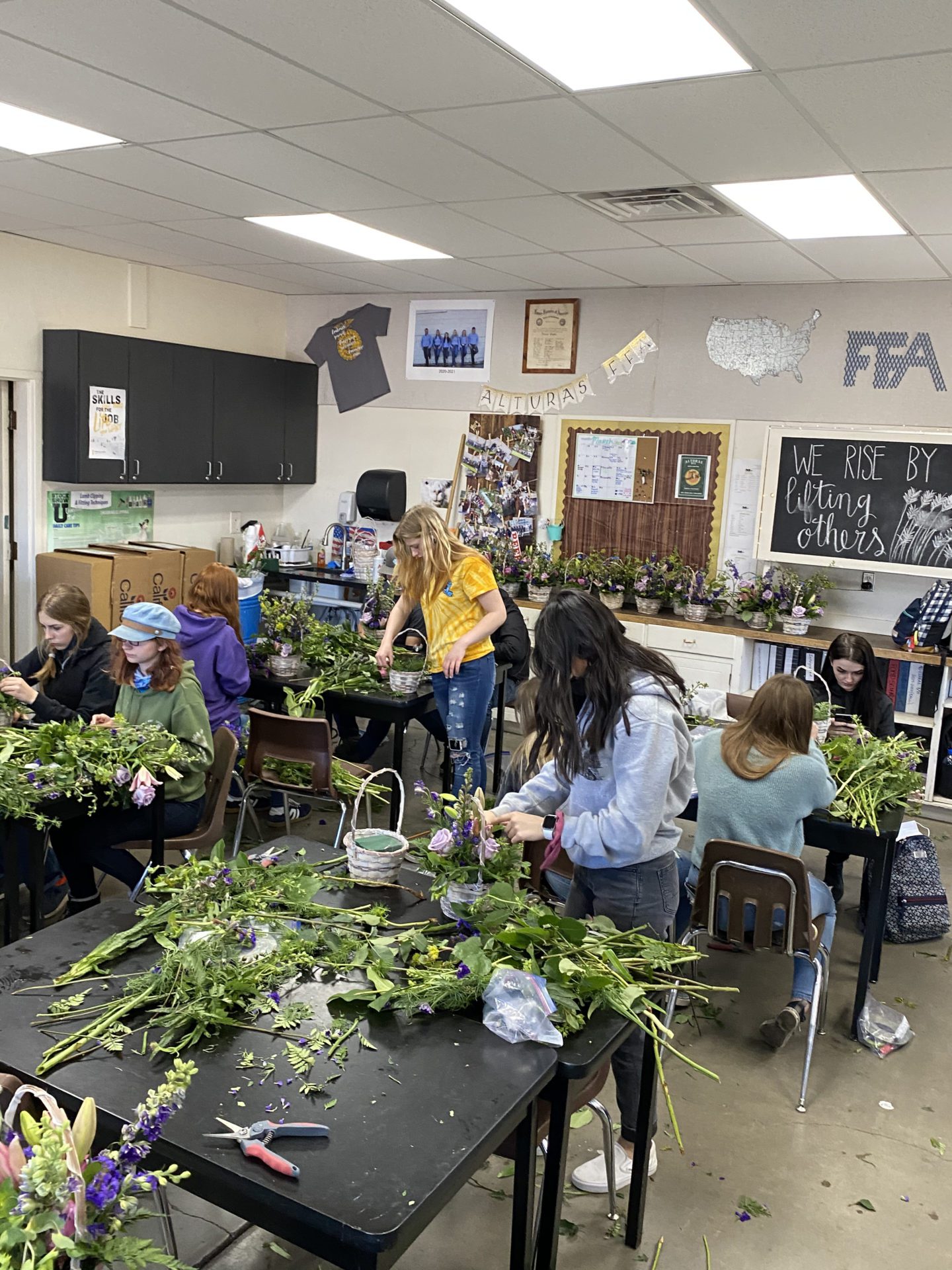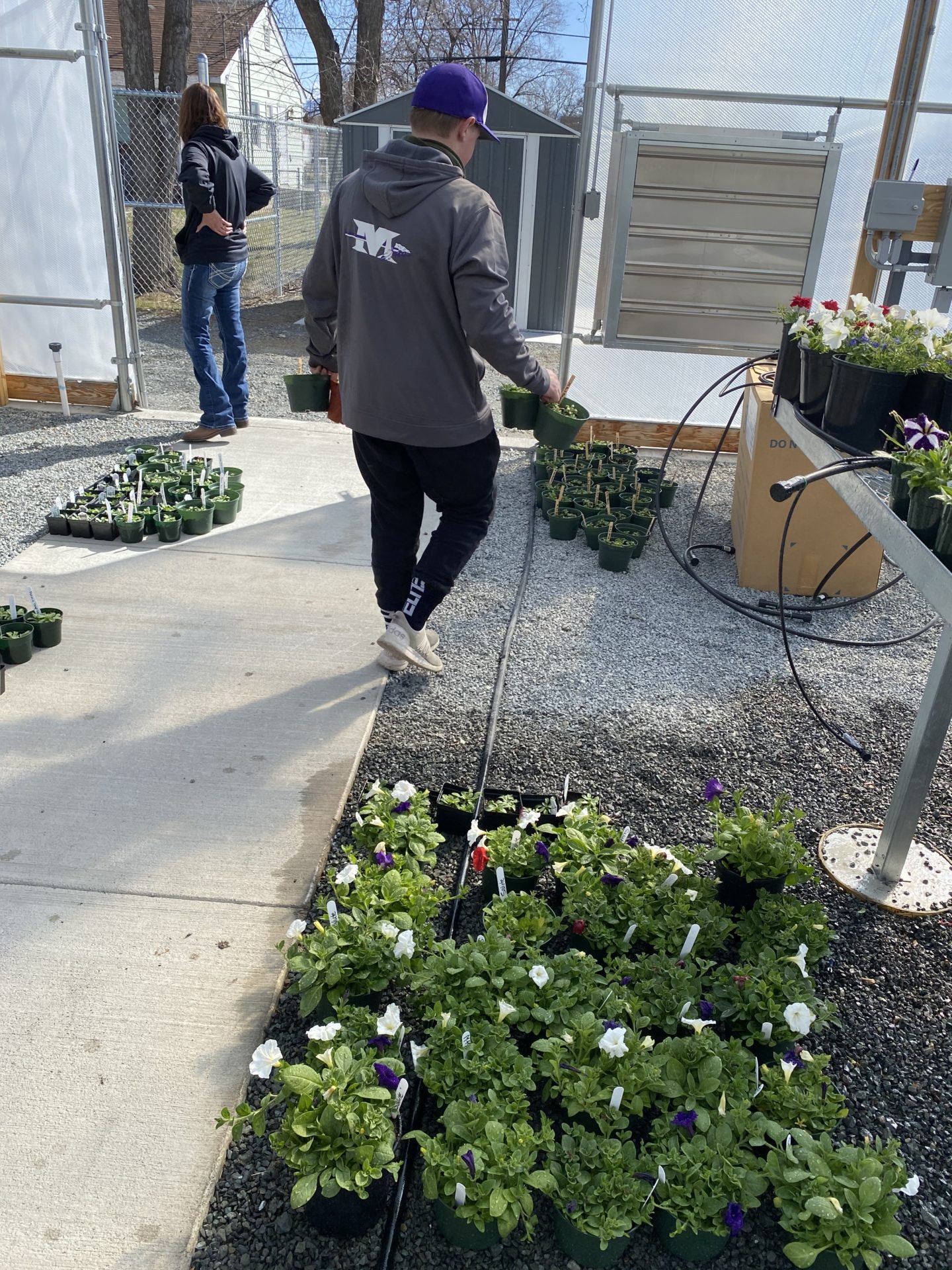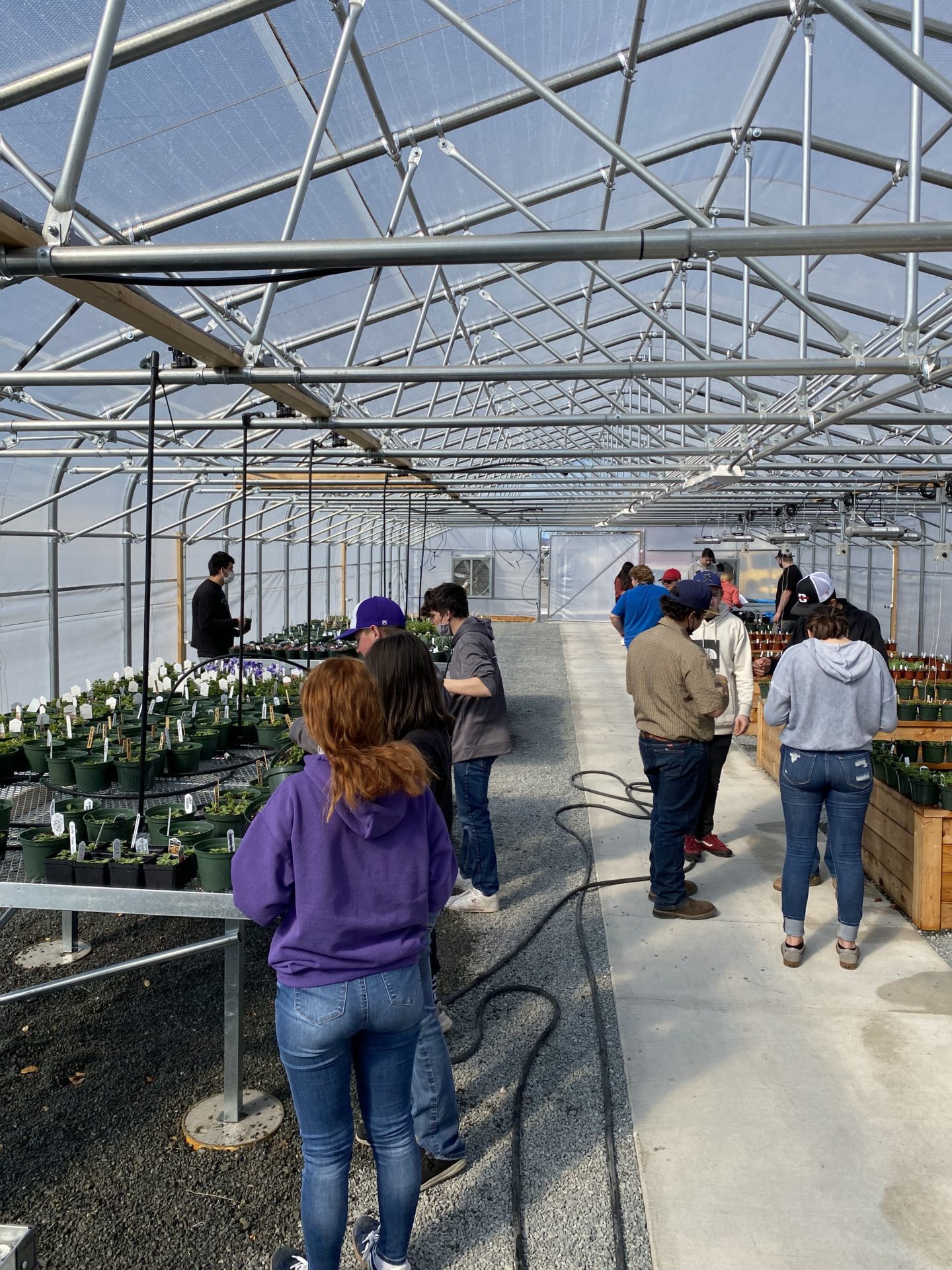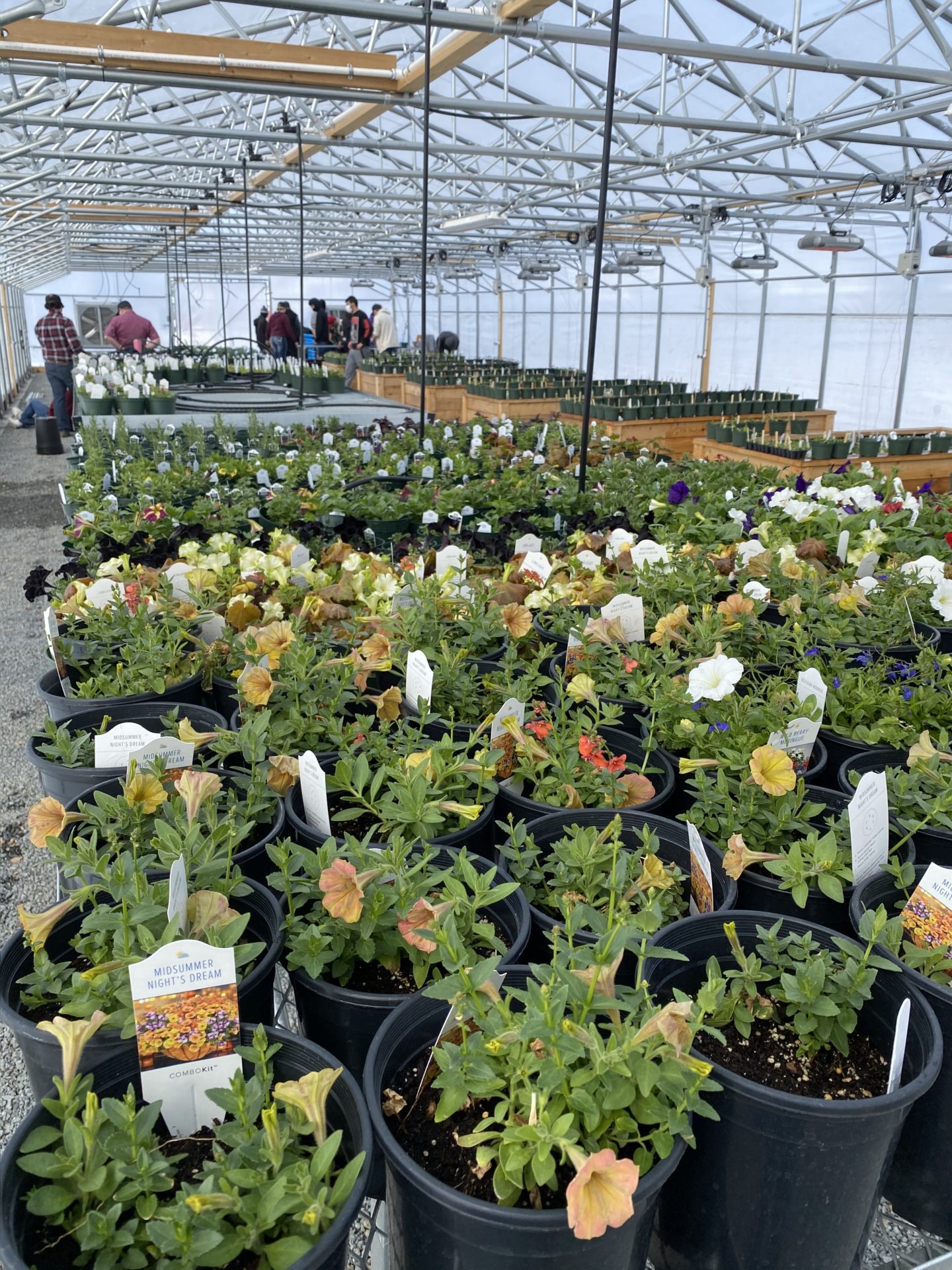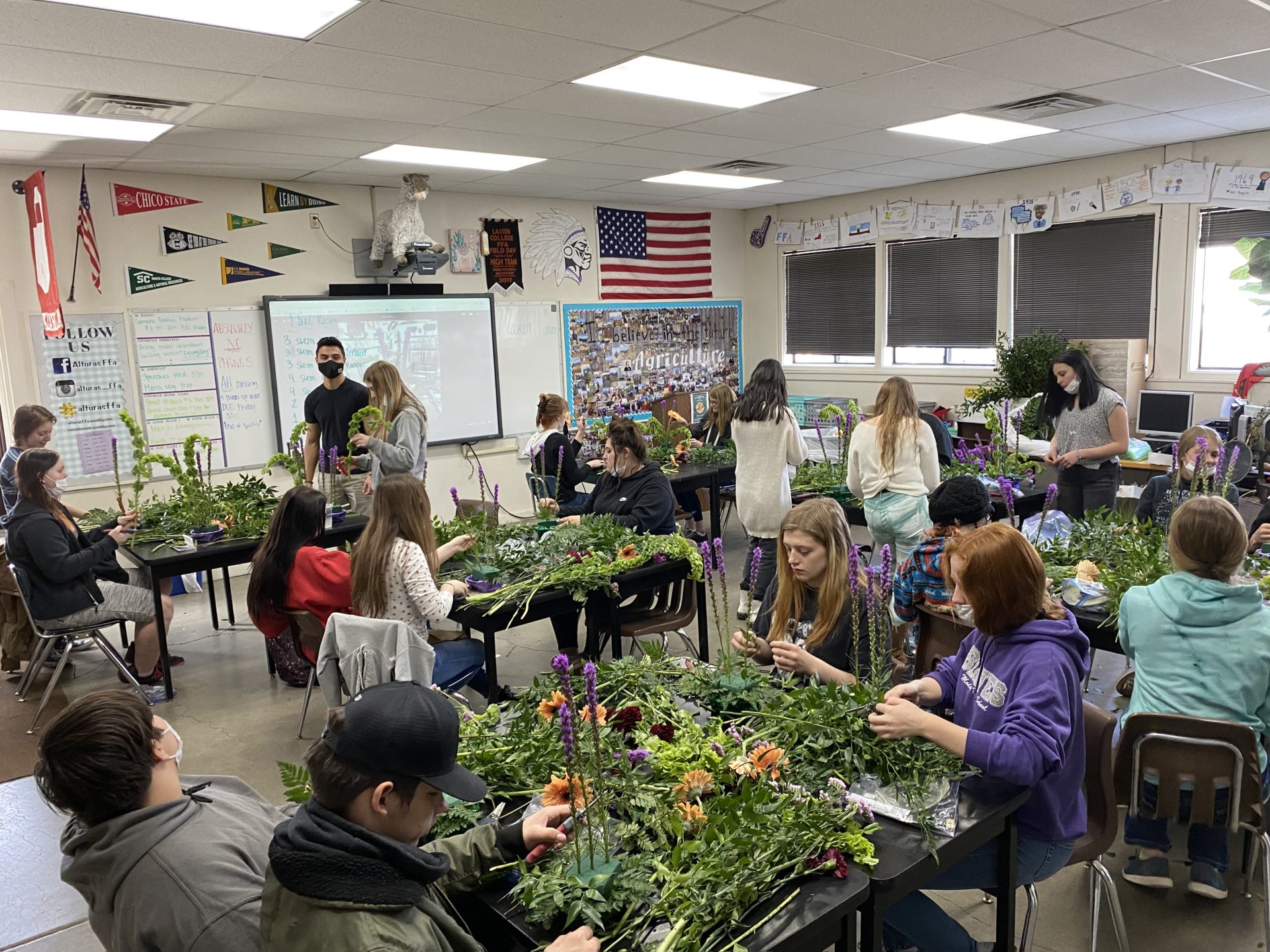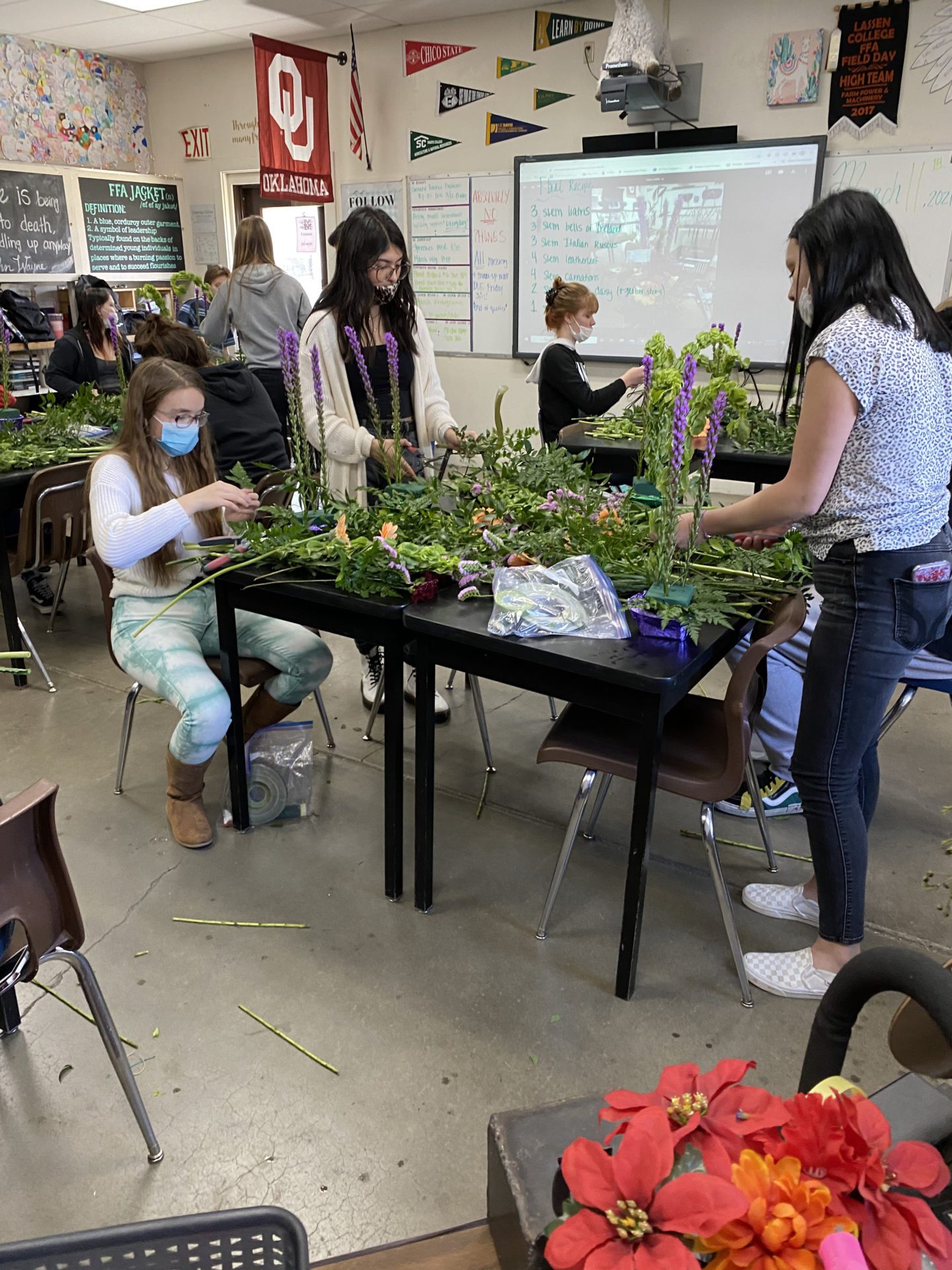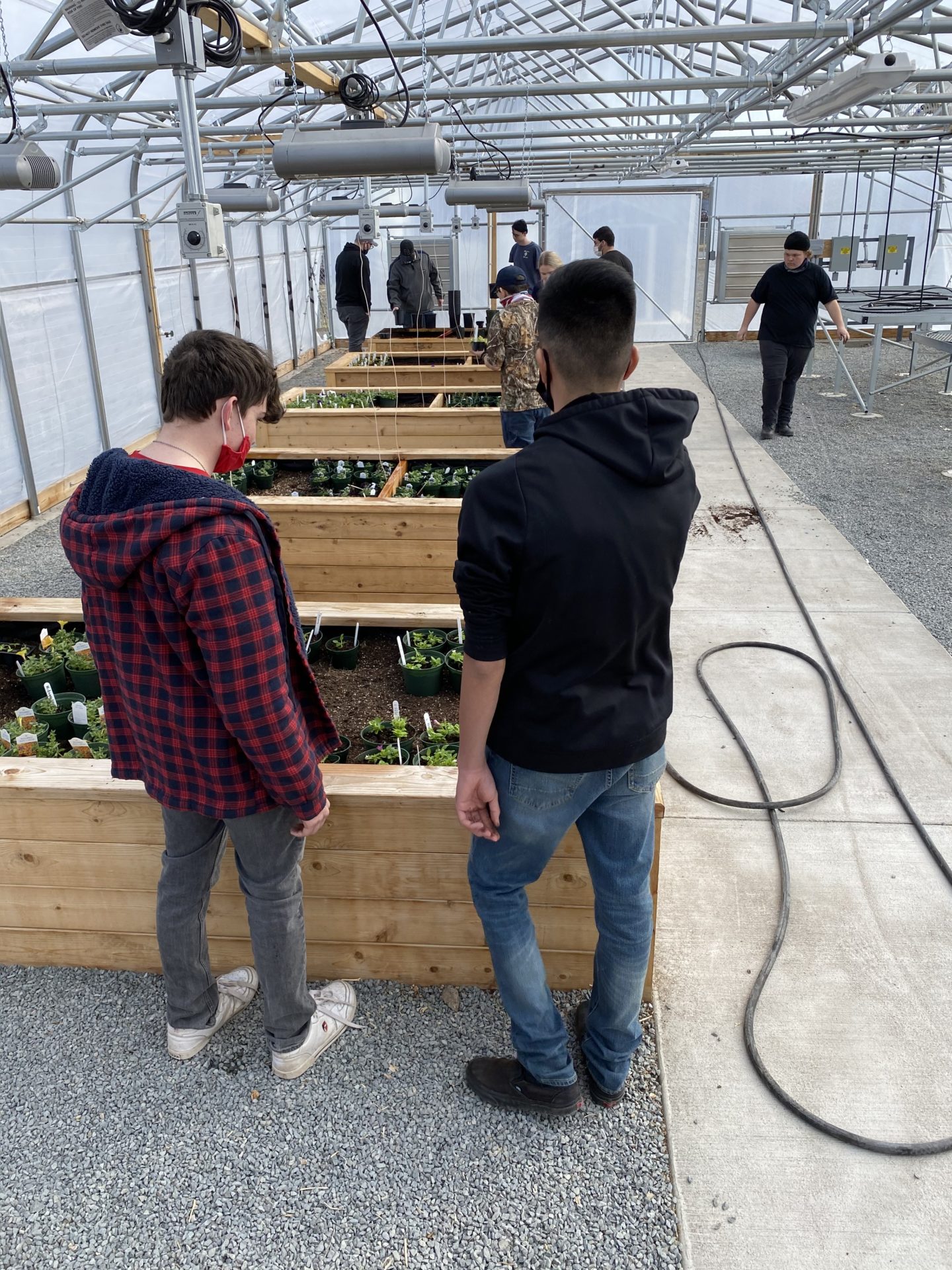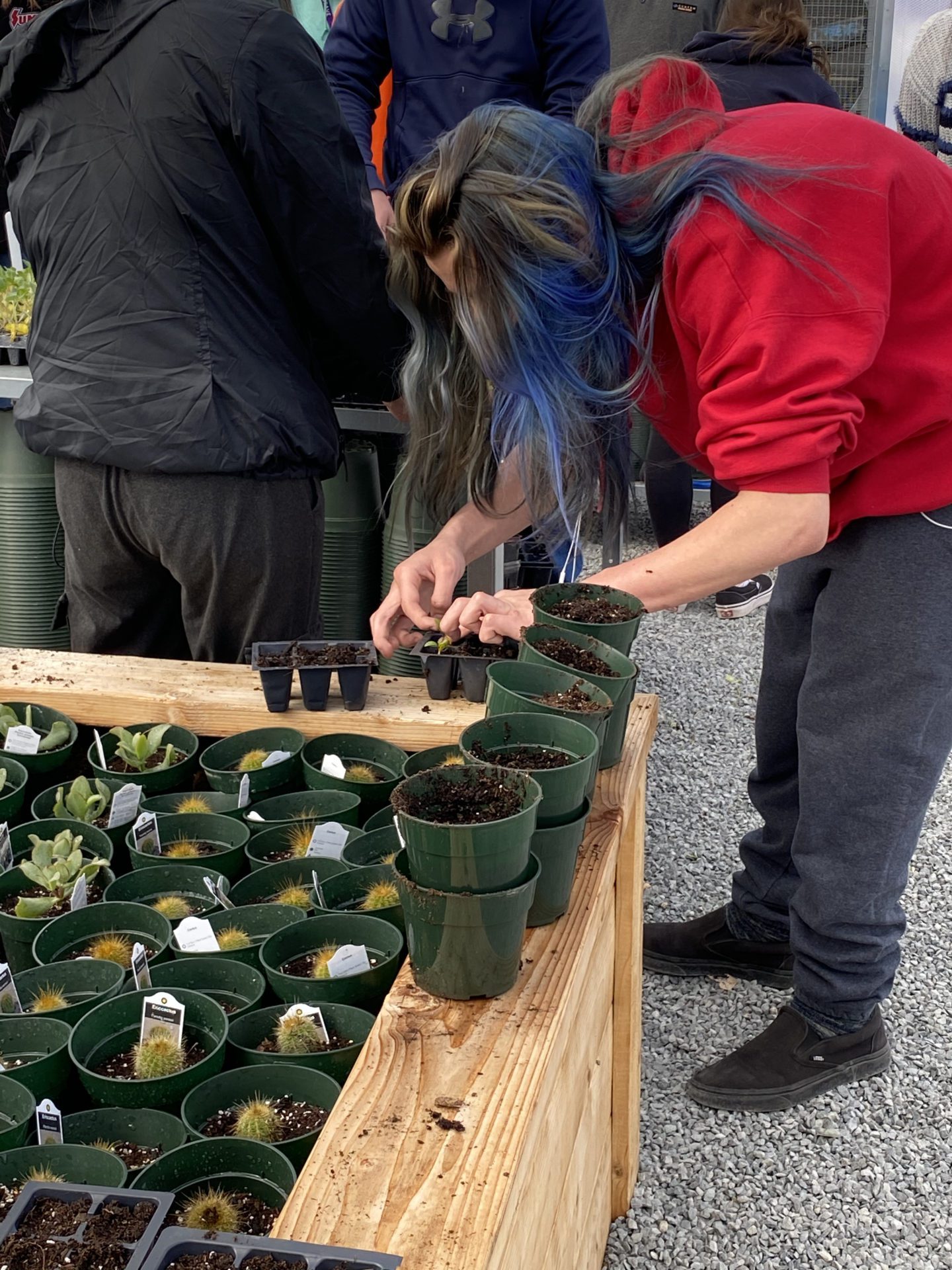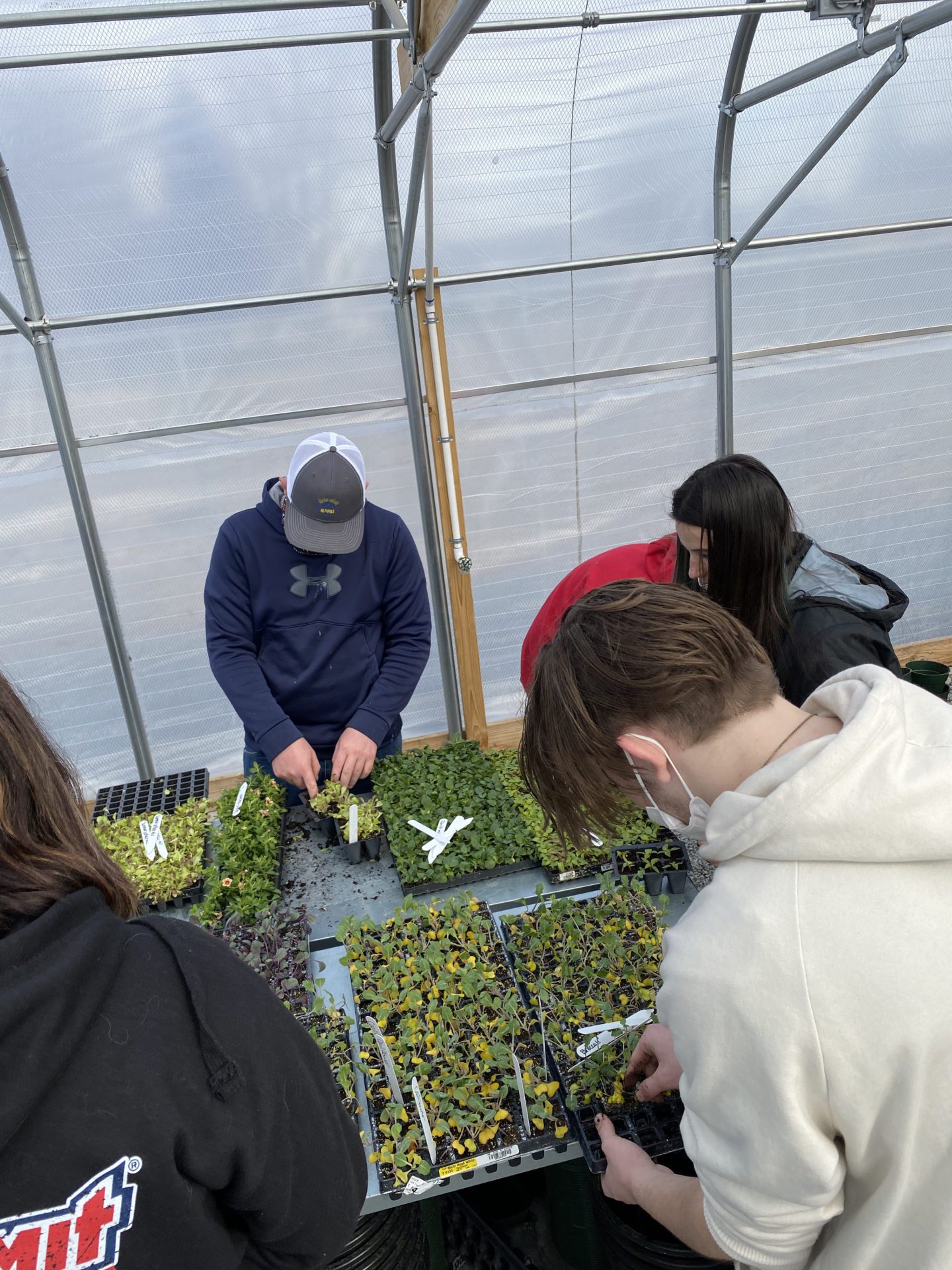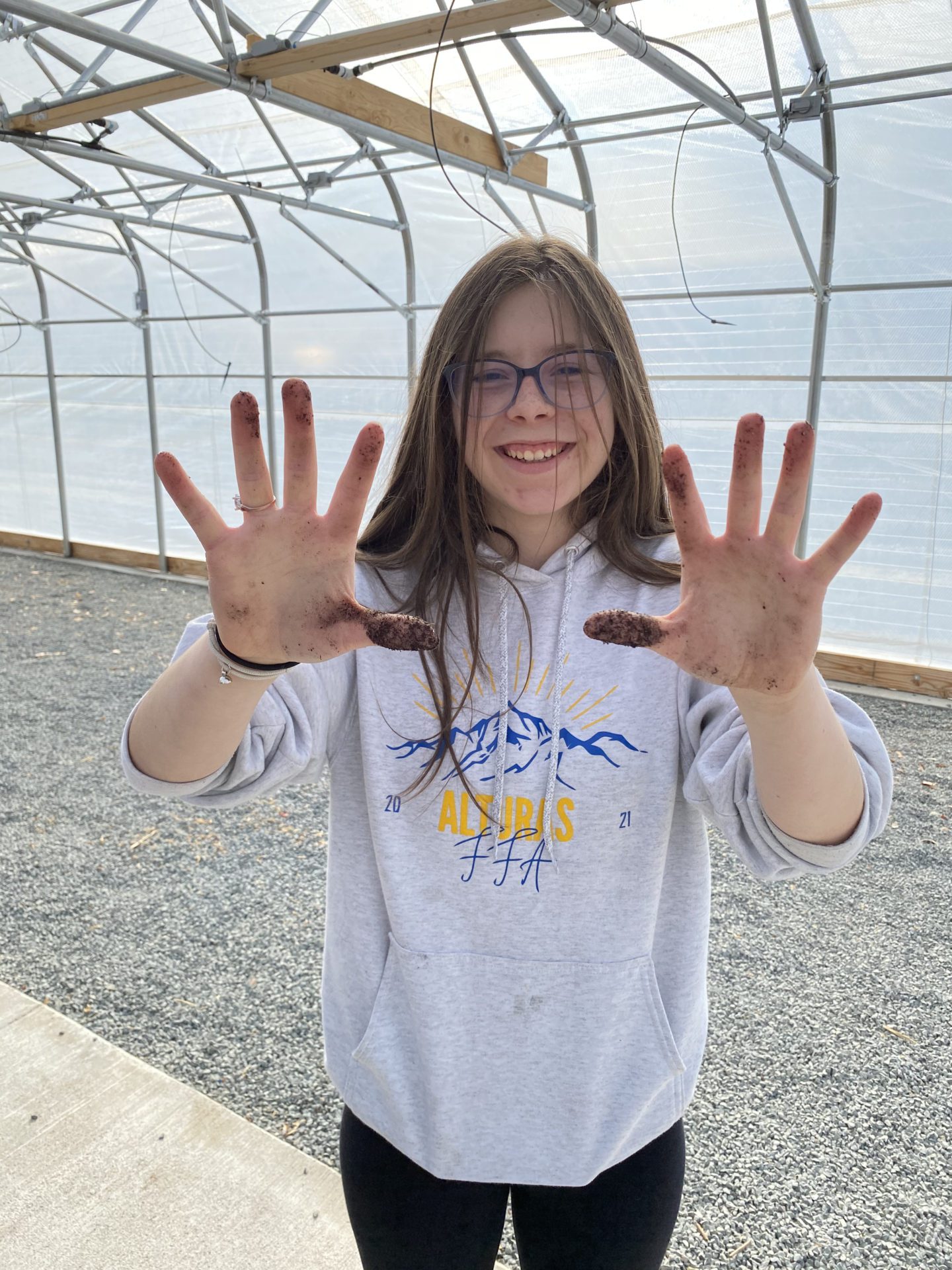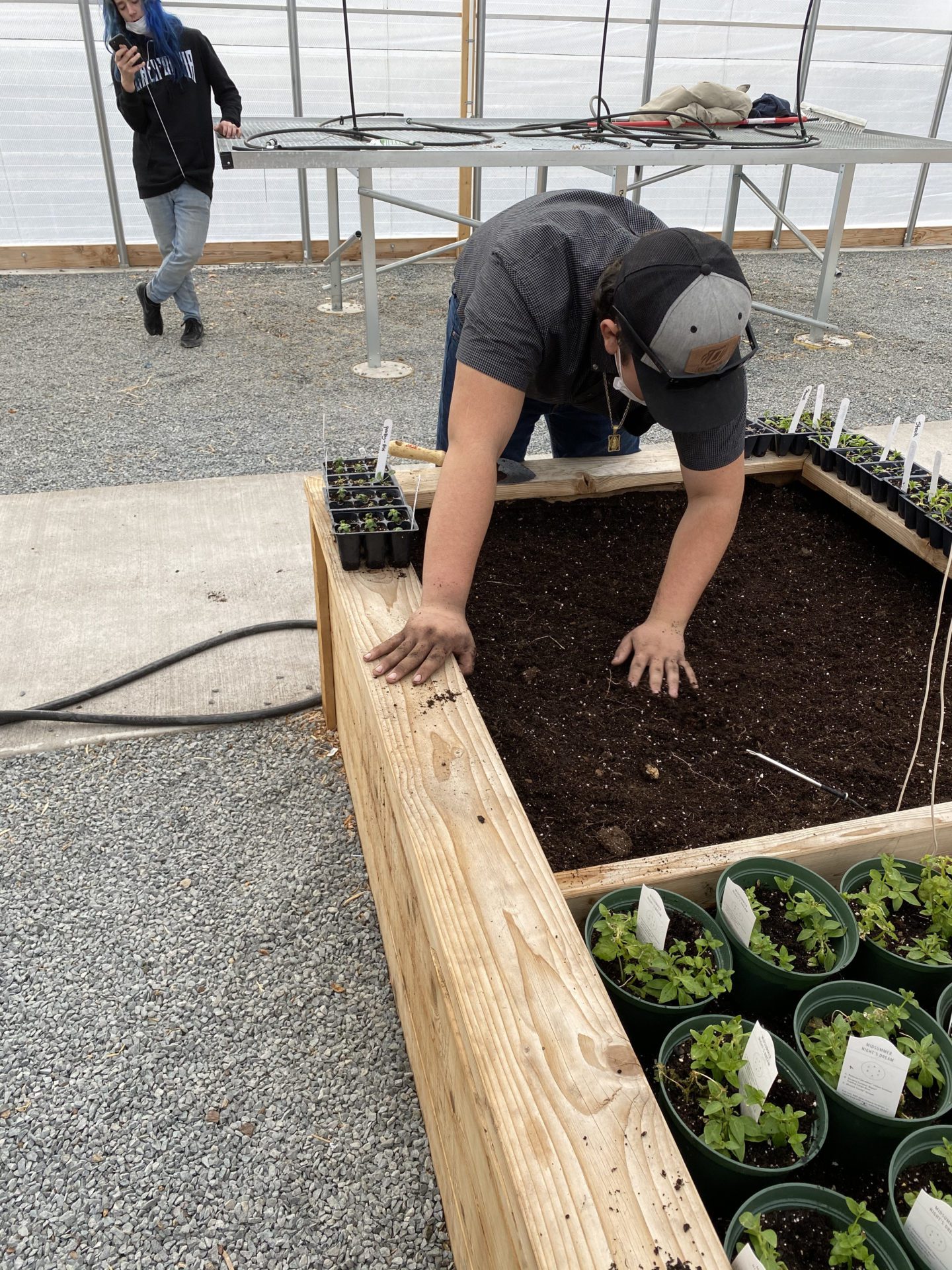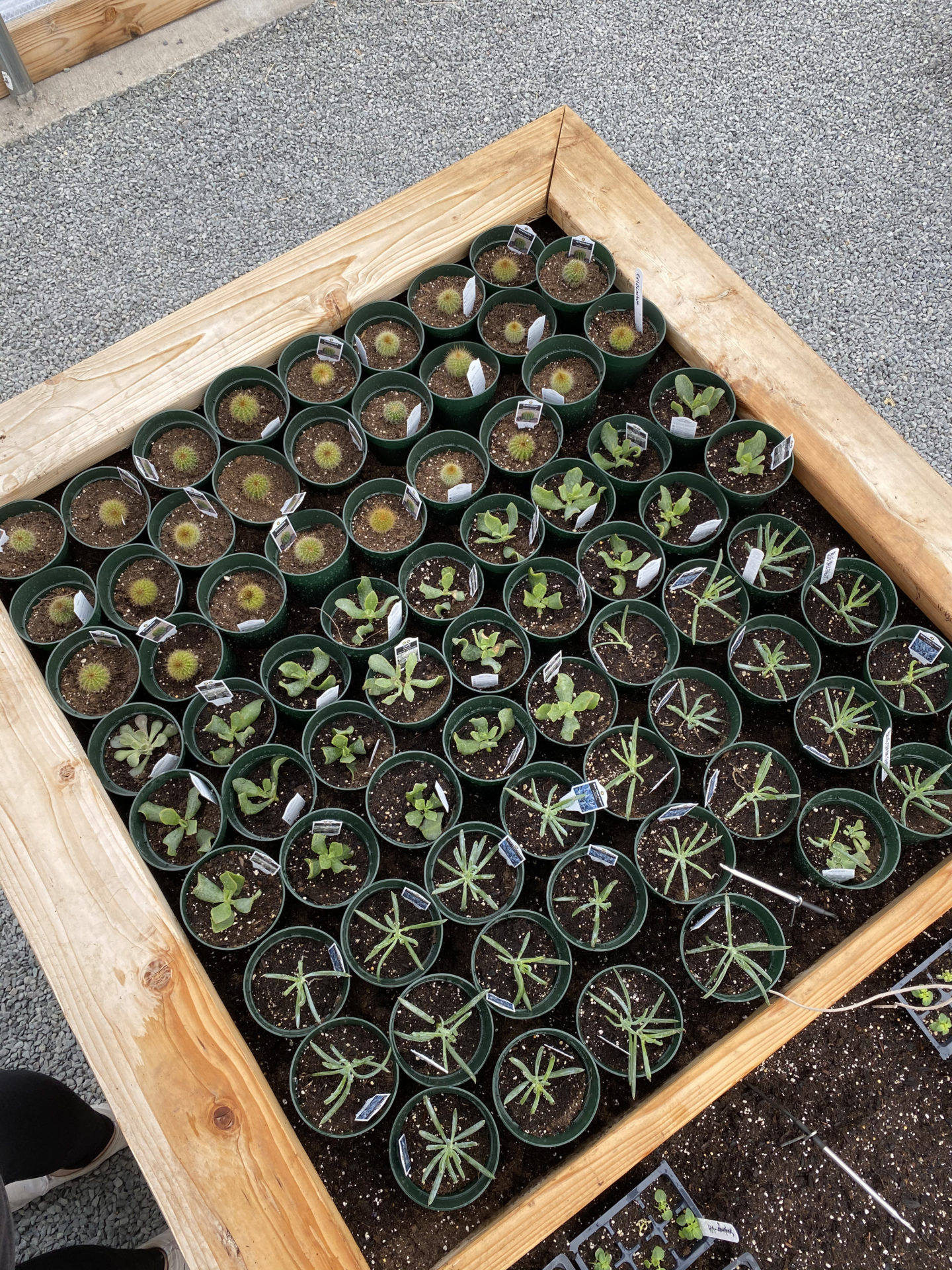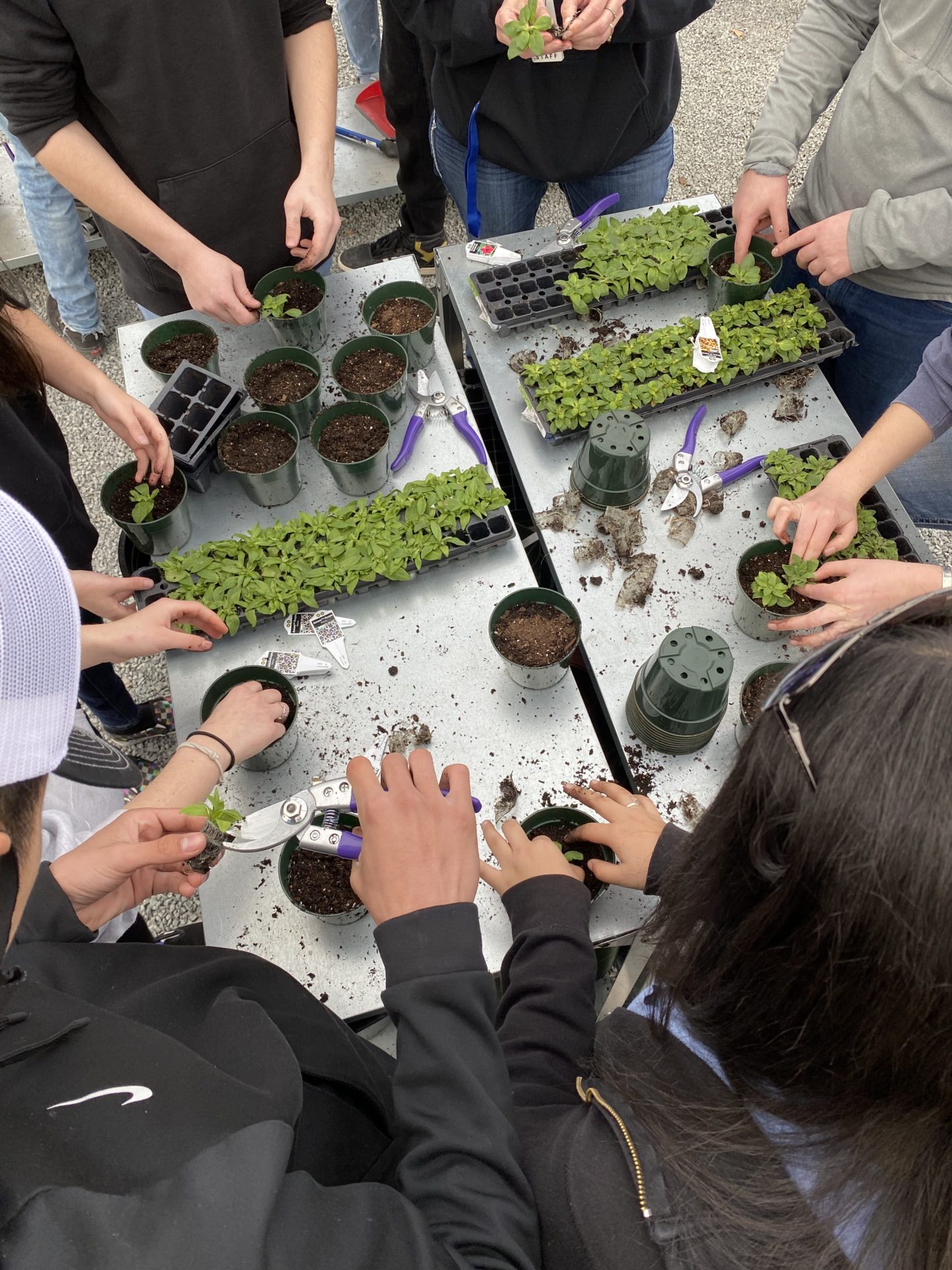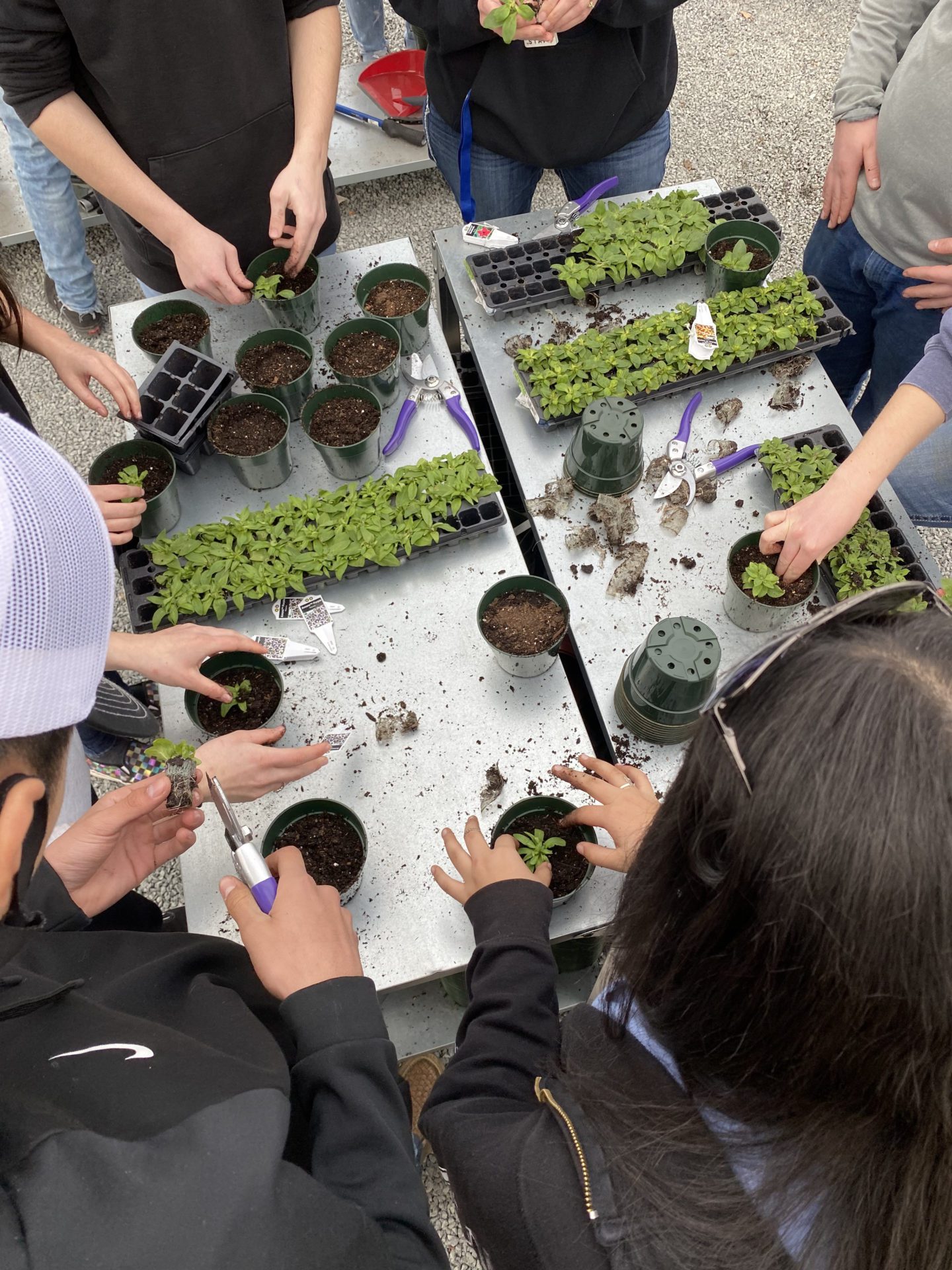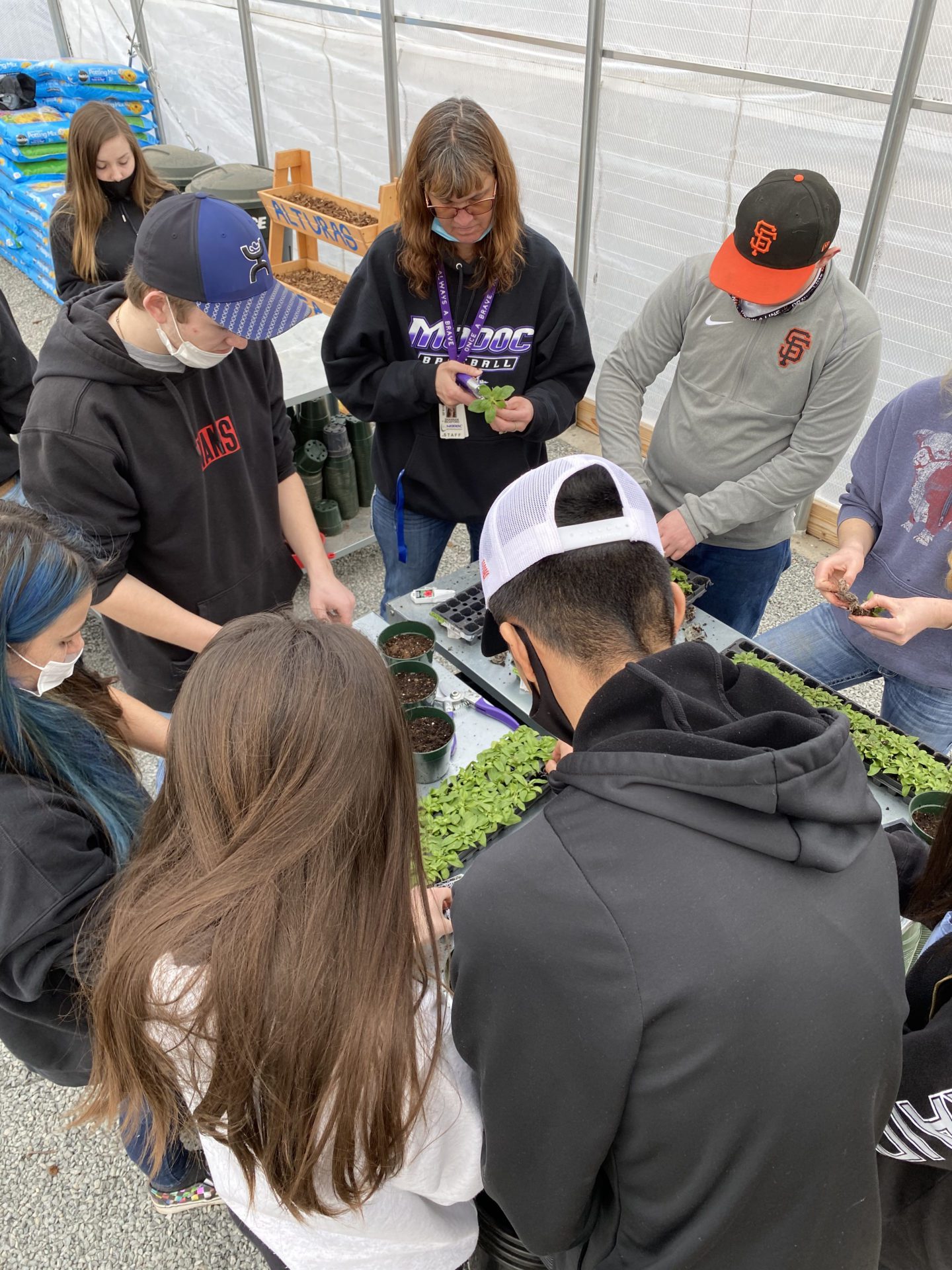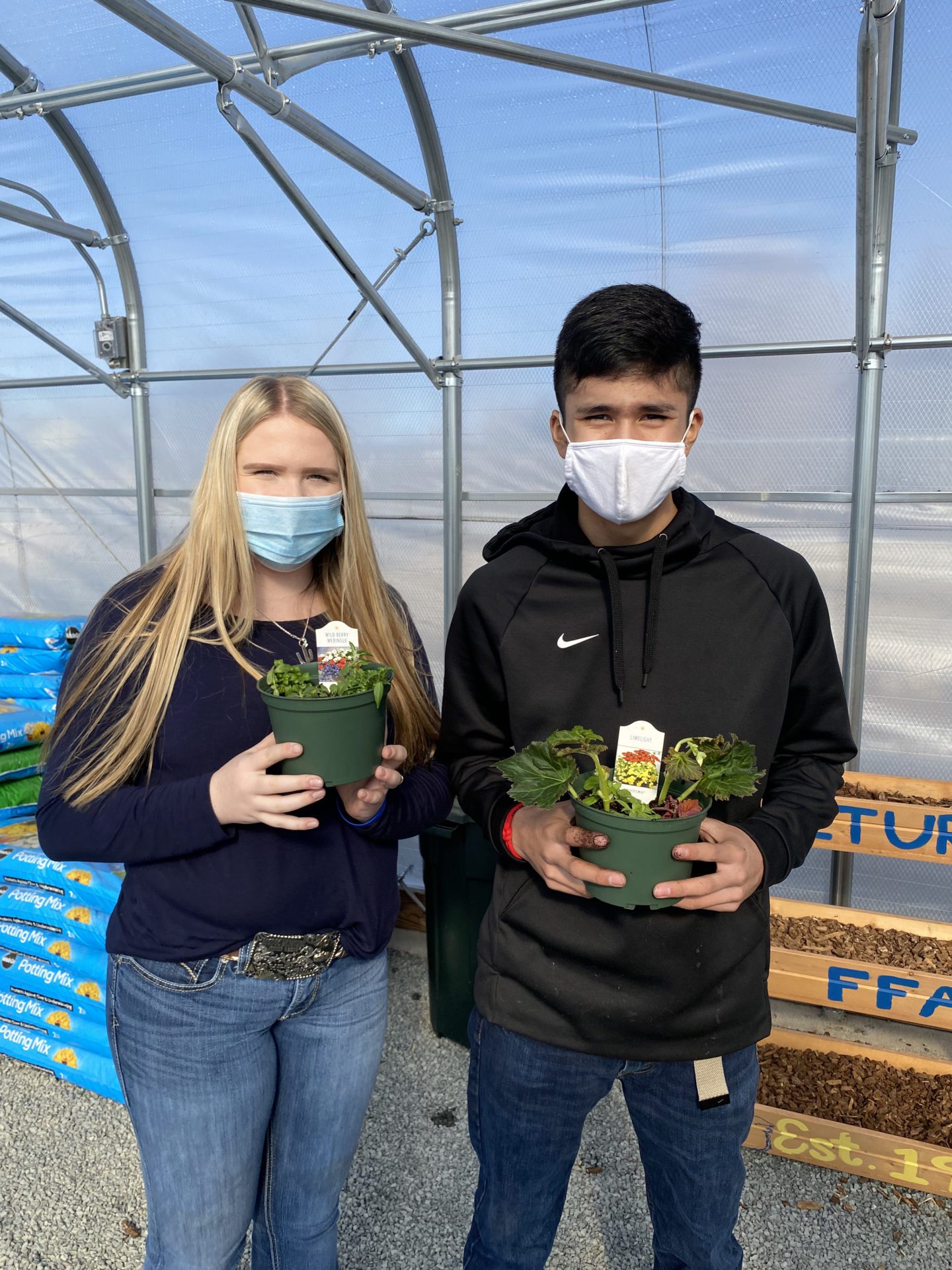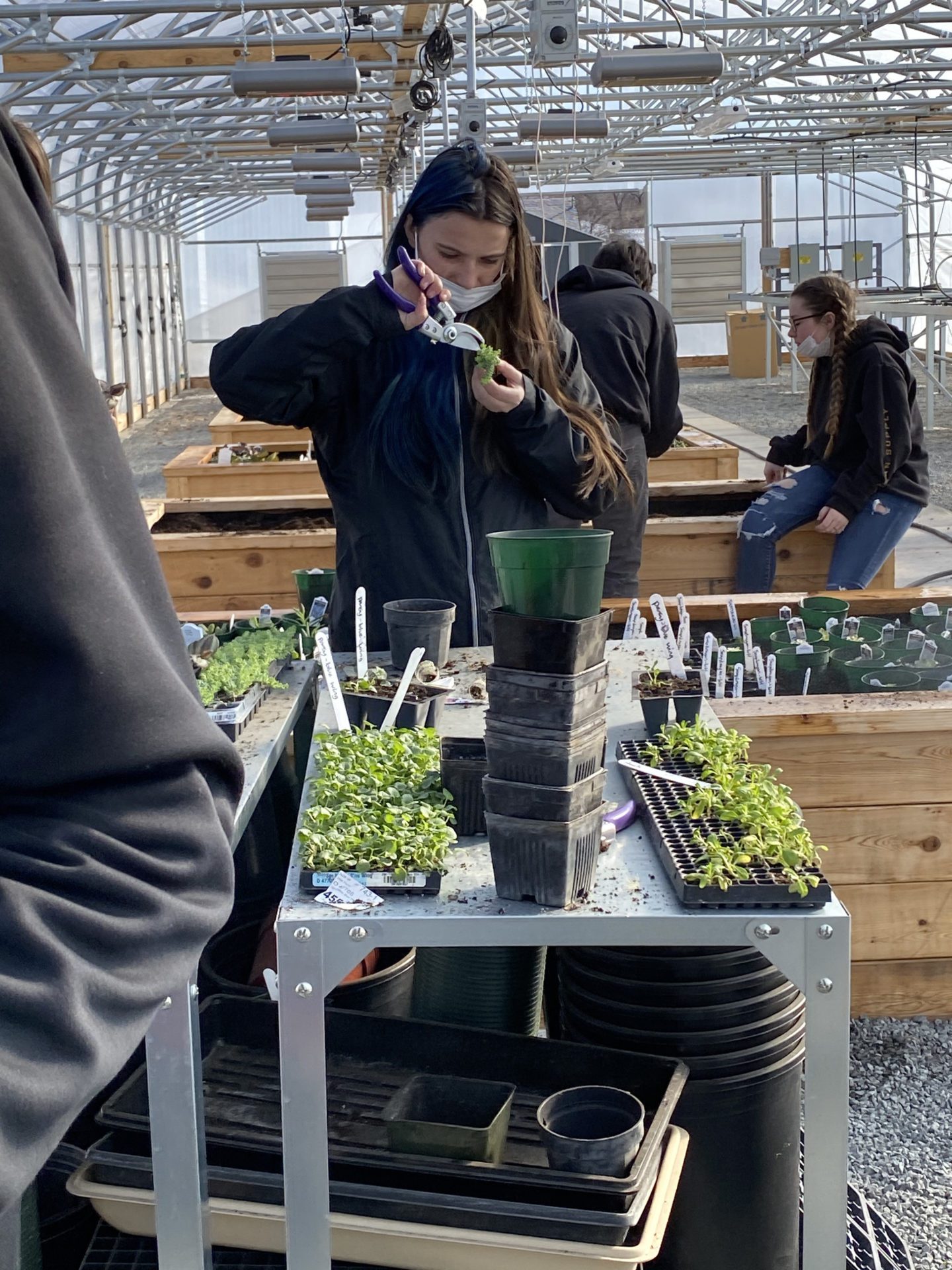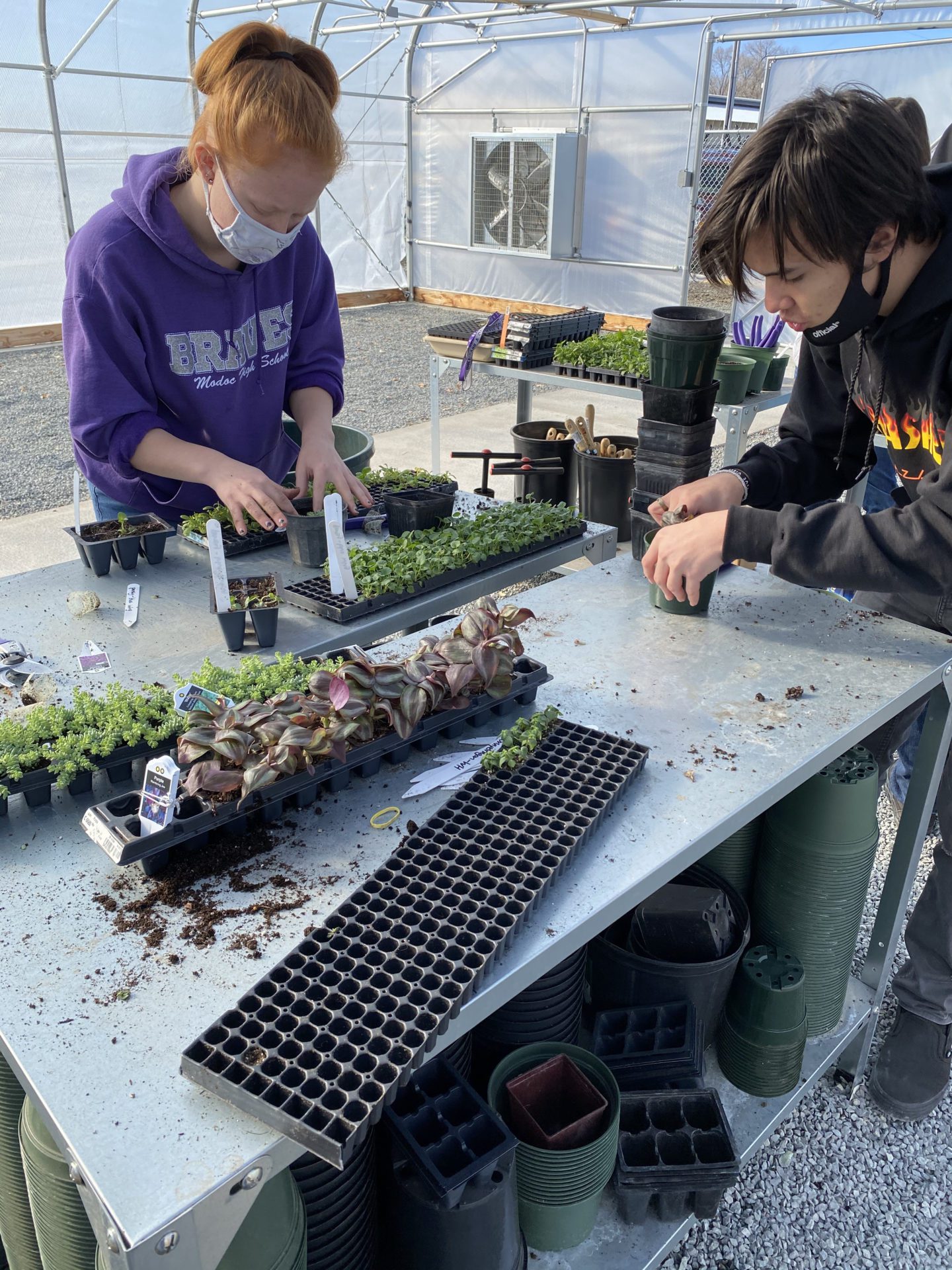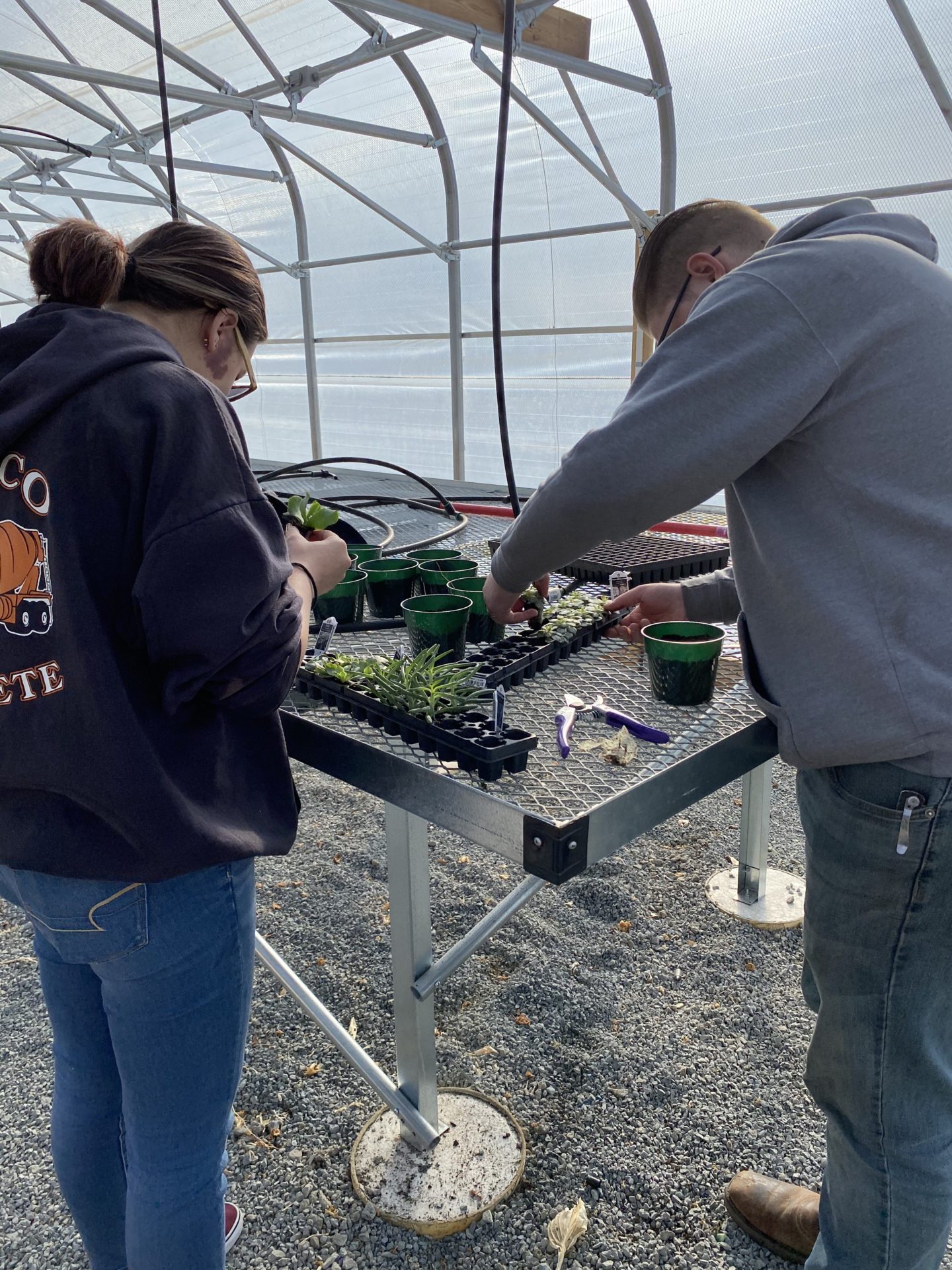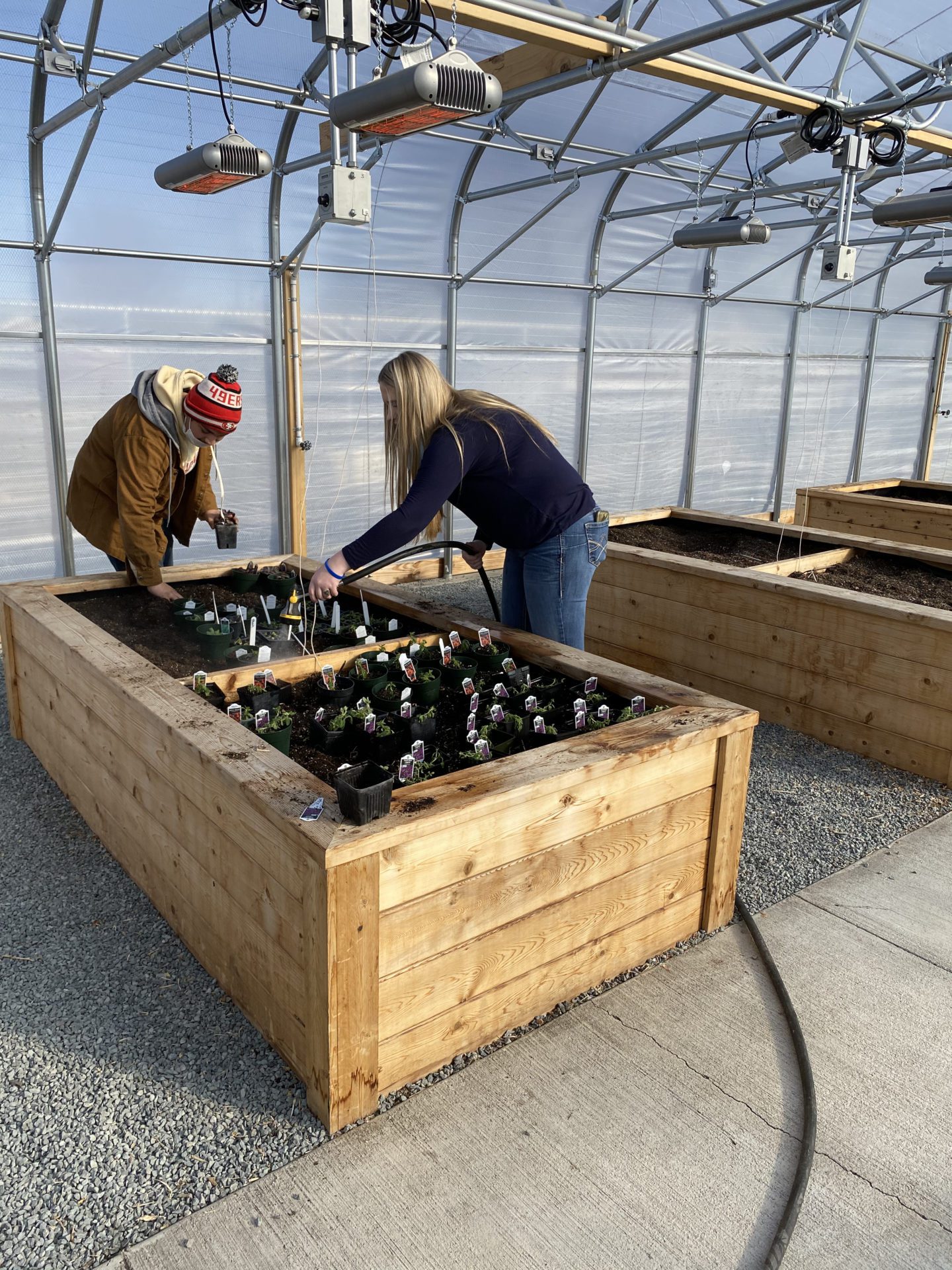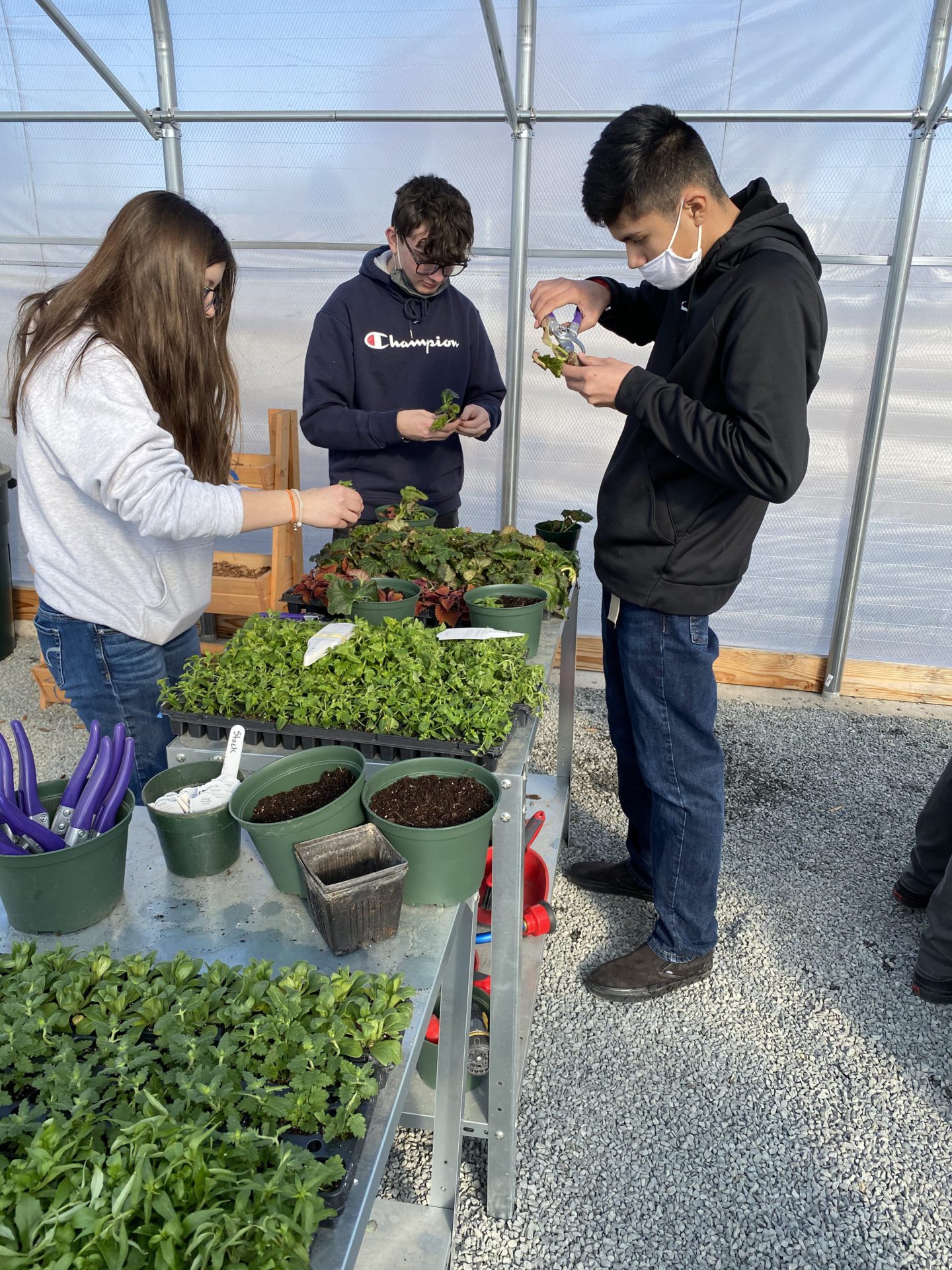Modoc High School Plant Pathways Growing Ag Careers
K-12 News Center – March 2021
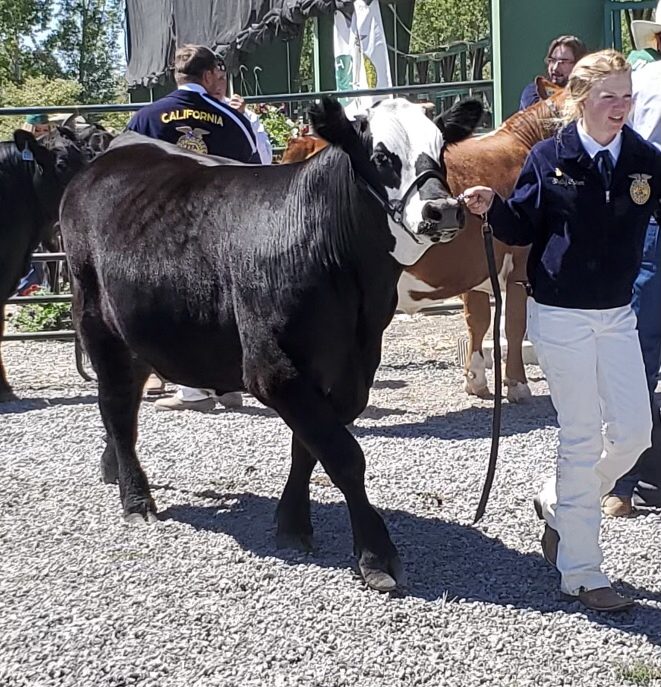 Known for breathtaking desert vistas, mysterious lava caves, and a “Wild West” feel, Modoc County has always depended on its expansive farmlands to cultivate its economy. Yet, in the last year and a half, that regional ag production has become more essential than ever.
Known for breathtaking desert vistas, mysterious lava caves, and a “Wild West” feel, Modoc County has always depended on its expansive farmlands to cultivate its economy. Yet, in the last year and a half, that regional ag production has become more essential than ever.
“This pandemic has put more value on local food,” explains industry partner Steffen Peterson, Executive Director of the community food hub, Modoc Harvest.
During the health crisis, he says the rural community, nestled in the remote northeast corner of California, was “far down the food chain” for receiving grocery shipments. So when it comes to local farm-to-fork meat, eggs and veggies, “We have seen increased demand community-wide for these products.”
That surge sparked an effort to develop internships with Modoc High School, affording students hands-on experience with agricultural producers and encouraging them to join the industry. The program is modeled on an existing community initiative that helps train, recruit and sustain farmers.
It was easy for the director to make the connection: “We said, ‘Hey, why can’t we do the same thing with our kids, present them with career paths, and keep them here in our county?’”
The work is part of the expanding agricultural Career Technical Education pathway at Modoc High School. Exposed to horticulture, food science, ag leadership and business, students explore multiple facets of the industry, discovering a passion for greener careers along the way.
“Agriculture is the number one employer in our county,” says instructor Dominique DeMoss. From the Bureau of Land Management to private ranches, aggies are in demand, and many students already come from farming families. Thus, it’s no surprise to the instructor that participation has remained strong: “A lot of the school is in the ag program.”
Ag’s burgeoning popularity is partly due to a new plant pathway, which sprouted last year with Strong Workforce and C-TECH support. Thanks to robust horticulture and floral courses, nearly half the school is enrolled in the ag program and receives practical training in the new greenhouse.
“A lot of them get really excited about it,” DeMoss says about the state-of-the-art facility. Especially after the challenges of the pandemic, she believes many students who were struggling in school have been saved by hands-on work. “One kid said, ‘This is really therapeutic,’” the instructor recalls.
Last year, budding gardeners hosted their first community plant sale, selling out of favorites like hanging baskets of petunias and potted basil. As DeMoss says, “It was a really big success for being the first one.”
The plant sale sensation could not have happened without the greenhouse, which is essential to combat the region’s cooler desert climate. According to Principal Brian Norby, “Modoc gets a little chilly – 10, 15 and 20 below zero in a good winter.”
For the plant pathway to continue to flourish, the greenhouse needs an efficient way to keep warm. Since the district has already spent a few million dollars to connect to old geothermal wells, it’s the natural solution for keeping plants nice and toasty throughout the cold season.
“We’ve got to have a heated greenhouse, and to do that without geothermal would cost us tens of thousands of dollars,” explains the principal. So this year, with the help of Strong Workforce, the school will tap into the heat, enabling students to grow year-round.
With an expanded planting season, learning possibilities and cross-division projects will proliferate. Take the cheerful red pepper crop, for instance. DeMoss says horticultural students can grow starts from seed, harvest the ripe fruit, and pass the peppers to become pickled by food science students. Then, the ag business class can market those items “farm to fork” style to the community.
“I would love to see a Modoc High School booth at our farmer’s market, selling products just like any other business,” says the food hub director. From growing and processing veggies to learning customer service and sales, Peterson says, “That gives them real-world experience.”
The school also plans to build a chicken coop, expanding egg-cellent options for student internships with the local food hub. Says the director, “Having resources like that at their disposal makes it a good fit for our organization to come in and train on the business side of things, as well as mentor them with producers.”
Meanwhile, home-grown bouquets will be on hand to add color to the school’s upcoming market booth. The school’s floral program is also expanding this year, and with SWP support, will soon be getting a walk-in fridge so students can work more weddings and events.
“It’s great for the kids to get out there and get that industry experience,” says DeMoss.
Alongside the real-world learning experience, students can choose to take science classes designed with an agricultural lens to help satisfy their curiosity right along with science requirements.
“It’s a great way to reach a lot of kids in our community,” says DeMoss. “It’s nice to have a science that’s catered to them but still helps them reach their higher educational goals.”
DeMoss points to Future Farmers of America (FFA) President and high school senior Shelby Criner as a prime example. Since the student is determined to be a livestock veterinarian one day, ag science is “what interests and makes sense to her,” explains her instructor. “It’s a really great outlet for these kids.”
Criner grew up on a ranch with cows and horses, and she owns a herd of commercial beef cattle that she plans to sell to help pay for college. Self-described as “cow obsessed,” the student started on the ag track her first year and has been udder-ly hooked ever since.
“Ag floral was my favorite class,” shares Criner, who has already worked numerous weddings employing her new skills. This year, she will be a teaching assistant for the first-year floral class while arranging bouquets for the FFA’s monthly subscribers.
For her last year of high school, she’s especially excited to experiment with growing different starts for the plant sale, particularly cactuses, which she says “flew off the shelves” last time they were offered. She’s also looking forward to planning “FFA Week,” pep rallies and public speaking events.
“Ag leadership is always a blast,” beams the chapter president, who is grateful that FFA activities are so closely intertwined with her ag classes. “We are going to be doing a bunch more in the greenhouse… and we’ve got some new ideas for ag floral.”
Criner says she is right on track to major in agriculture in college before applying to veterinary school. She credits her strong foundation in the school’s ag program for embedded FFA opportunities.
“FFA has really helped me getting out there, going to all of those leadership conferences and breaking out of my shell,” confides Criner.
Modoc students have recognized the opportunity for what it is. According to her principal, FFA membership within the school has soared from 50 to 70 percent since adding the greenhouse. From sharpening public speaking skills to propagating plants, the program helps students like Criner feel more confident to go off to college and start ag careers.
Says the senior, “That has really helped me a lot and will continue to help me.”
